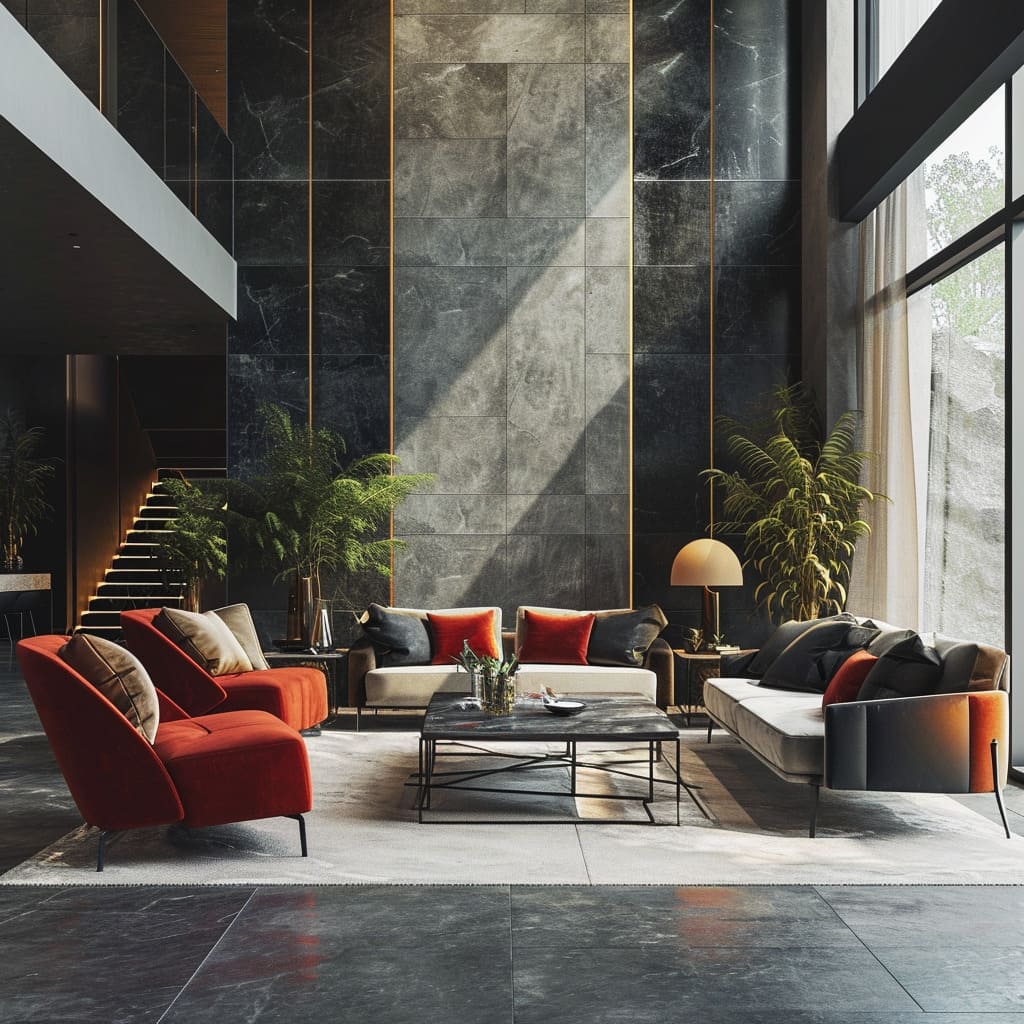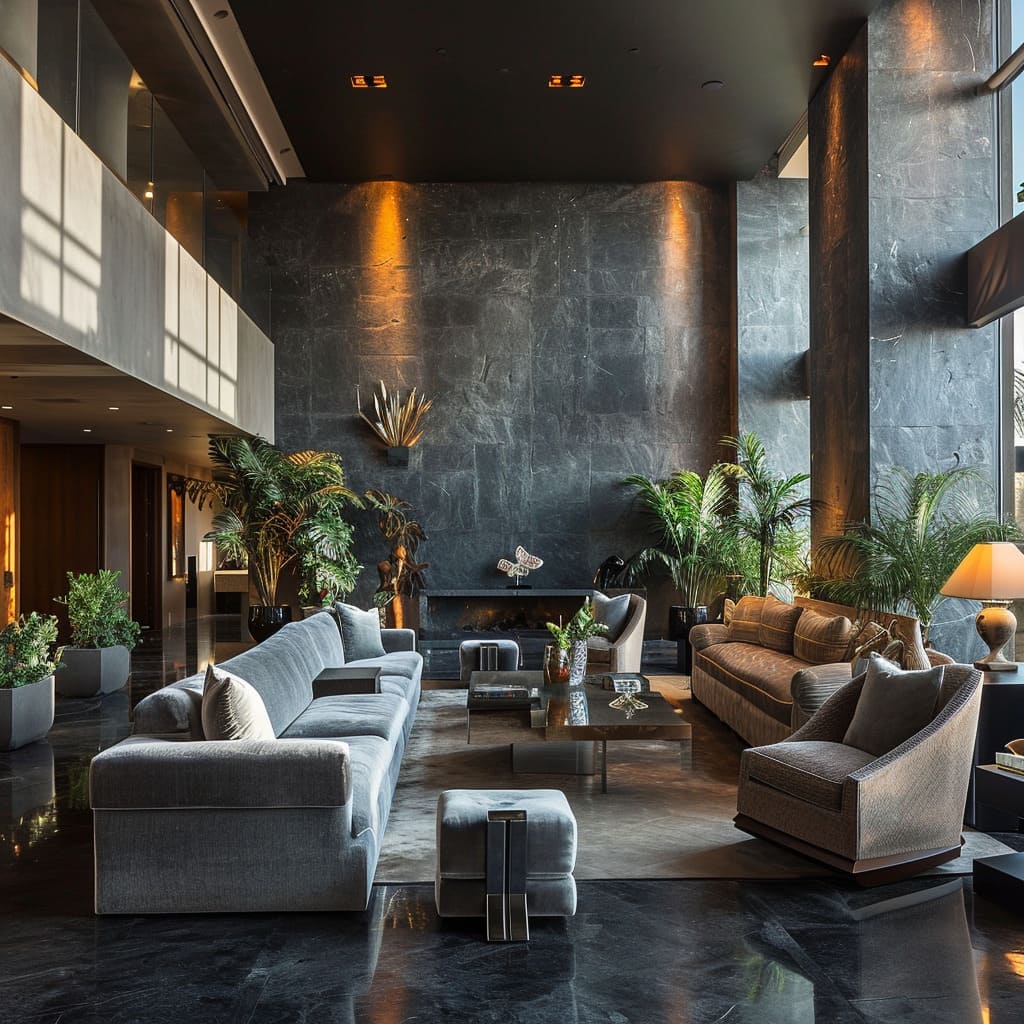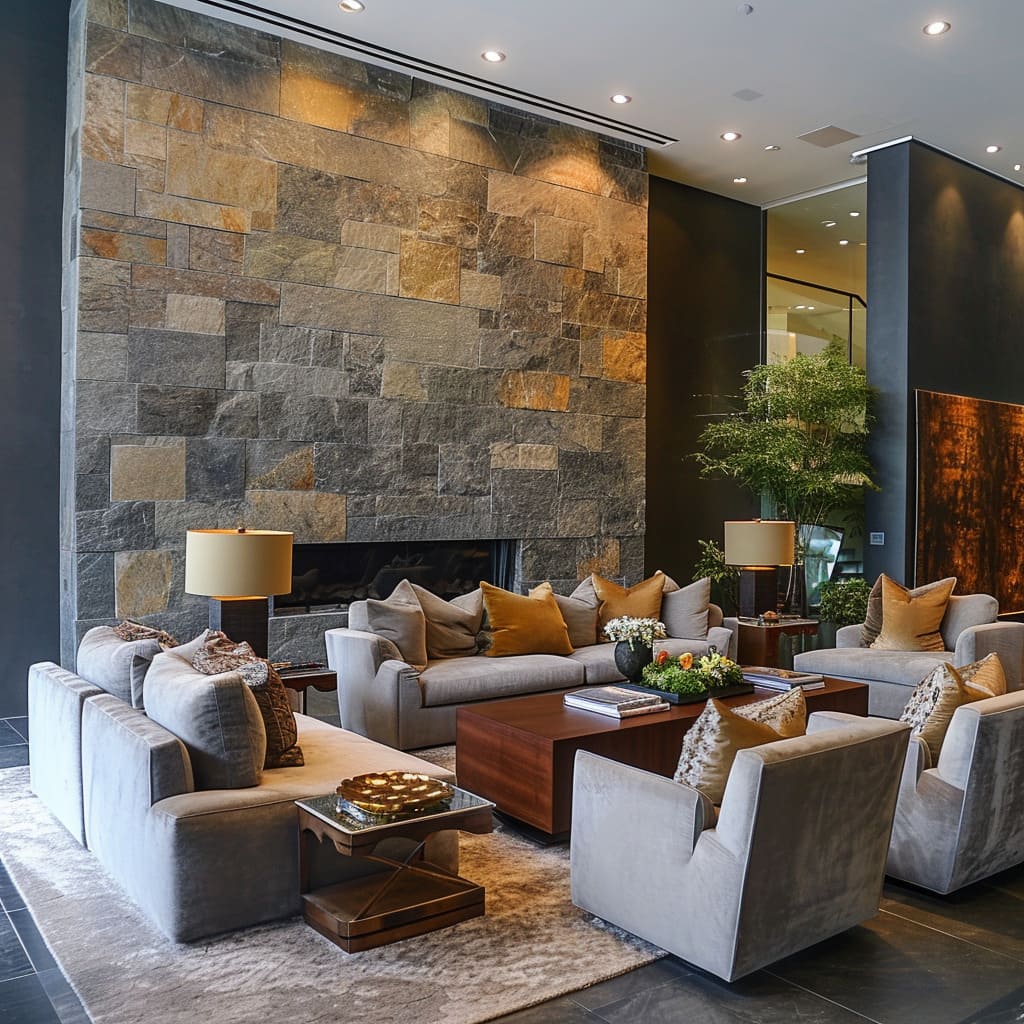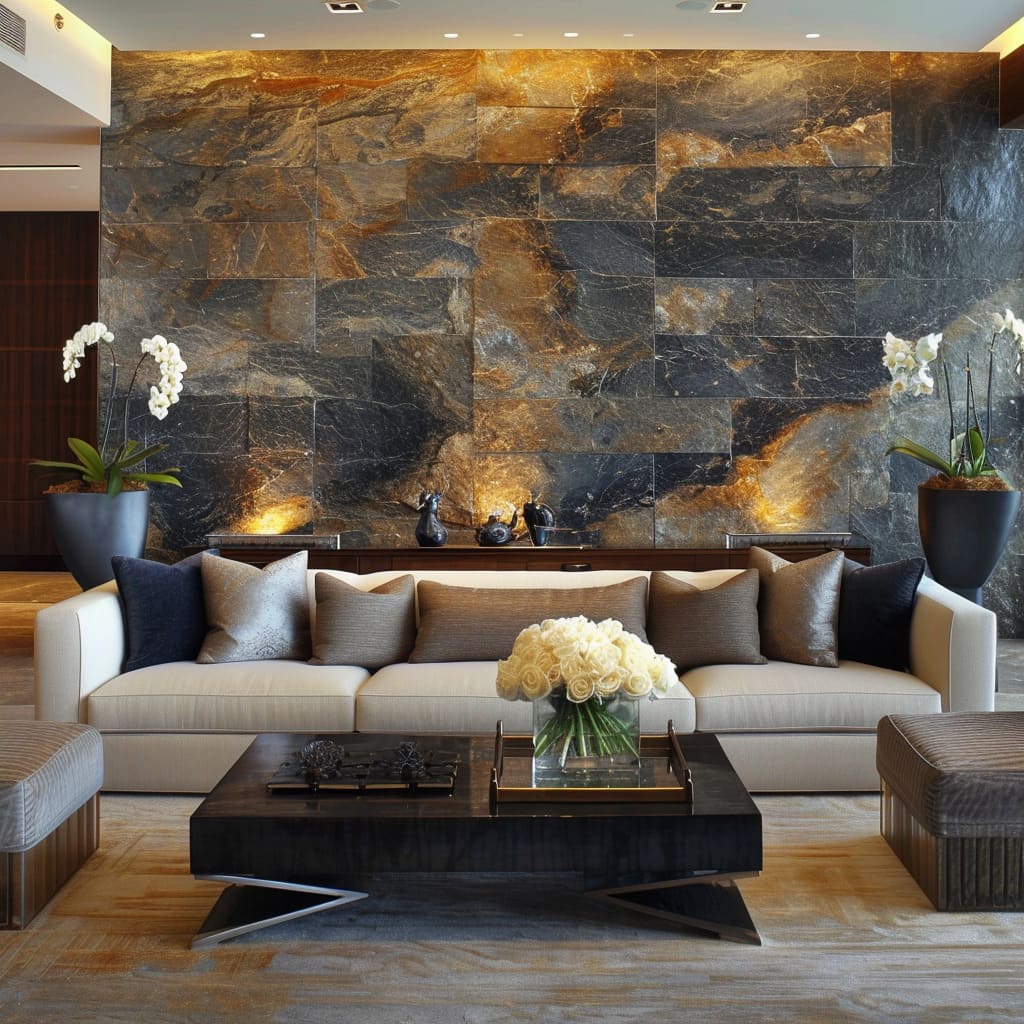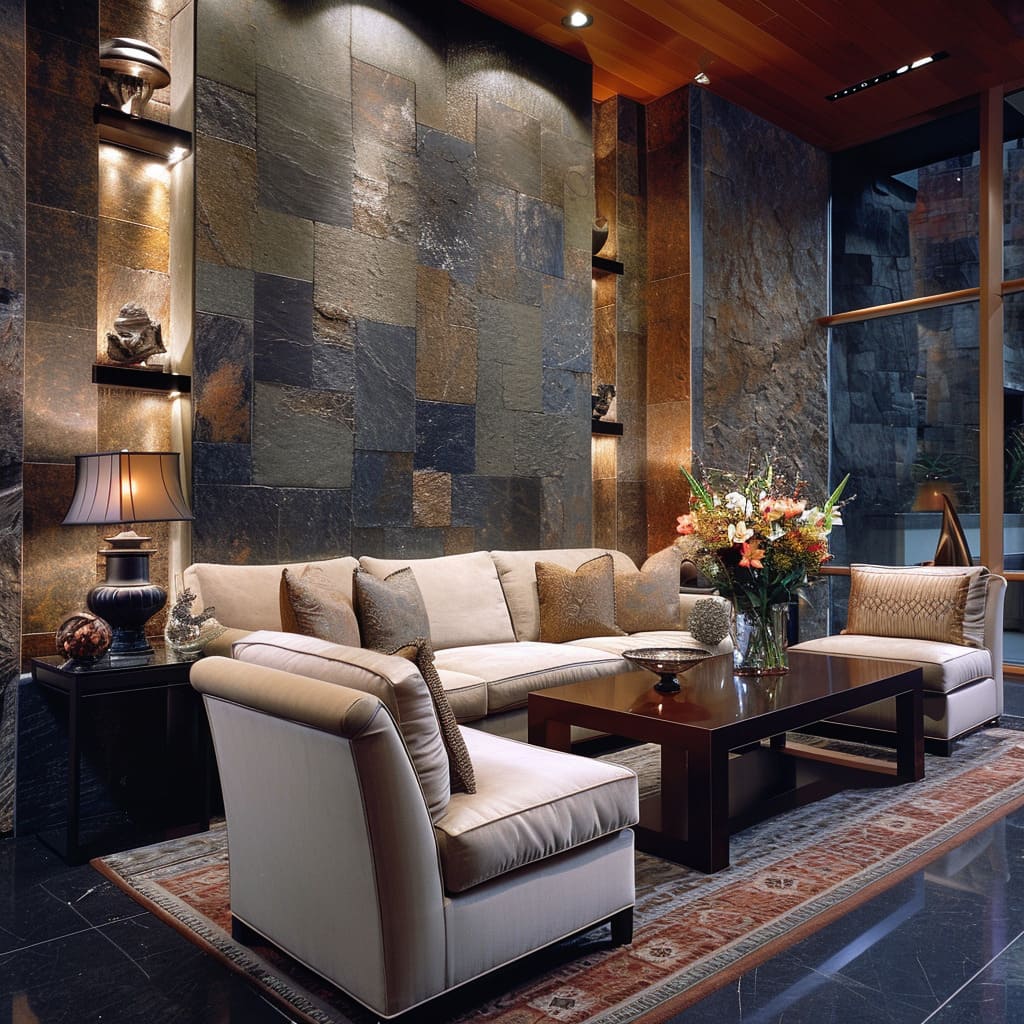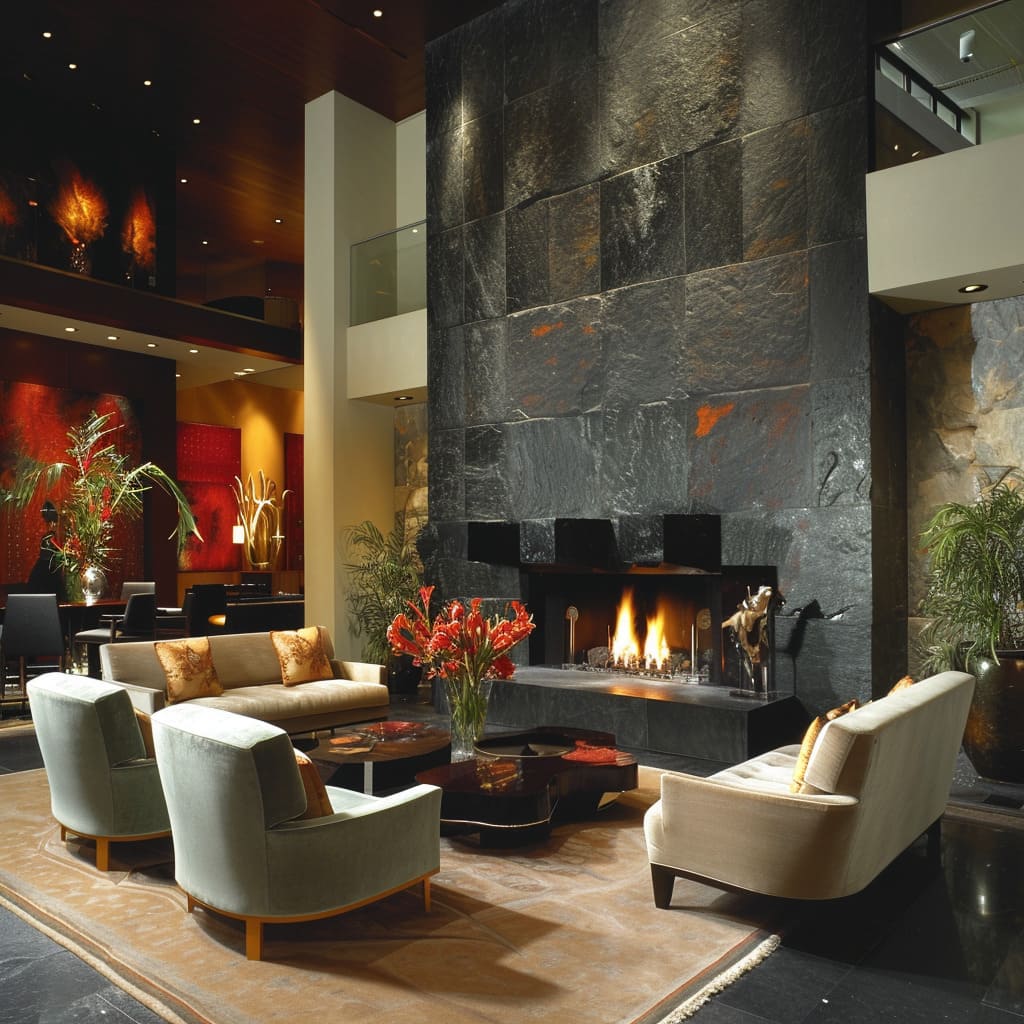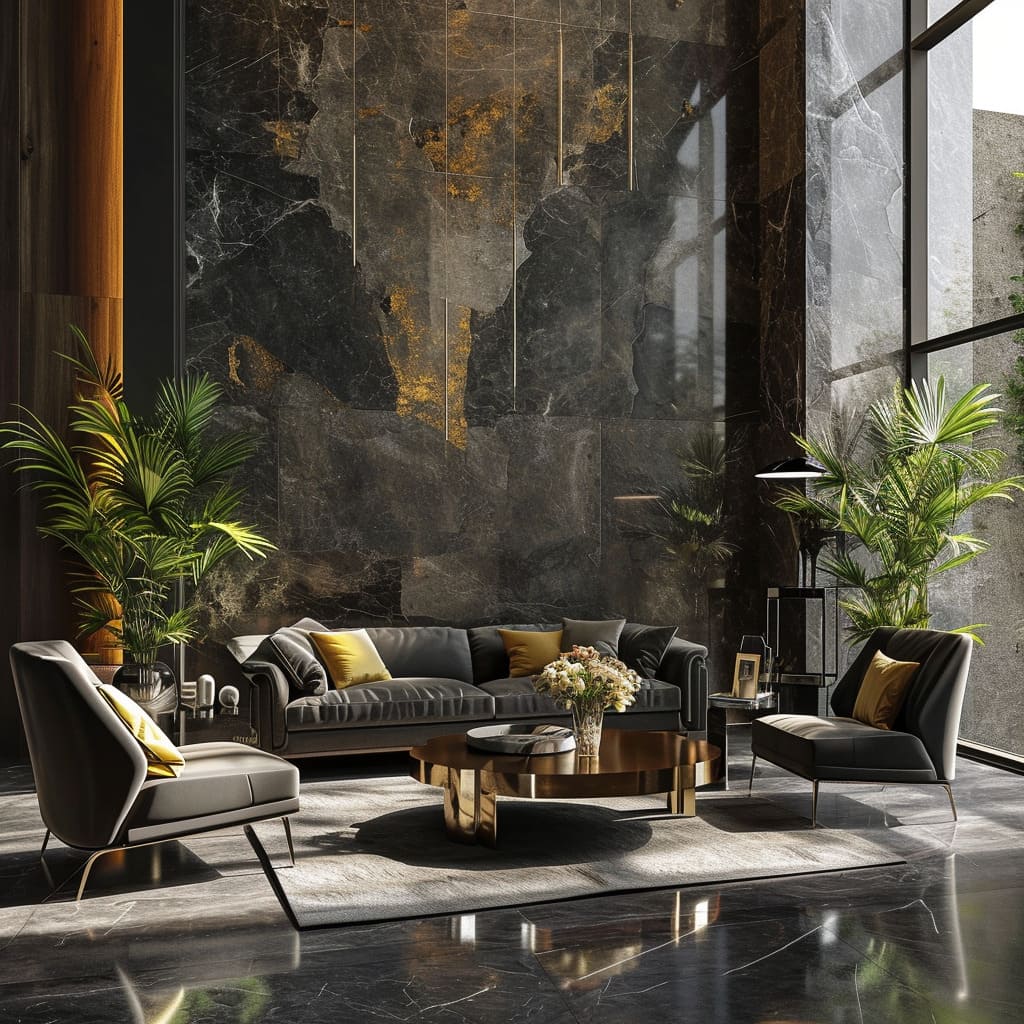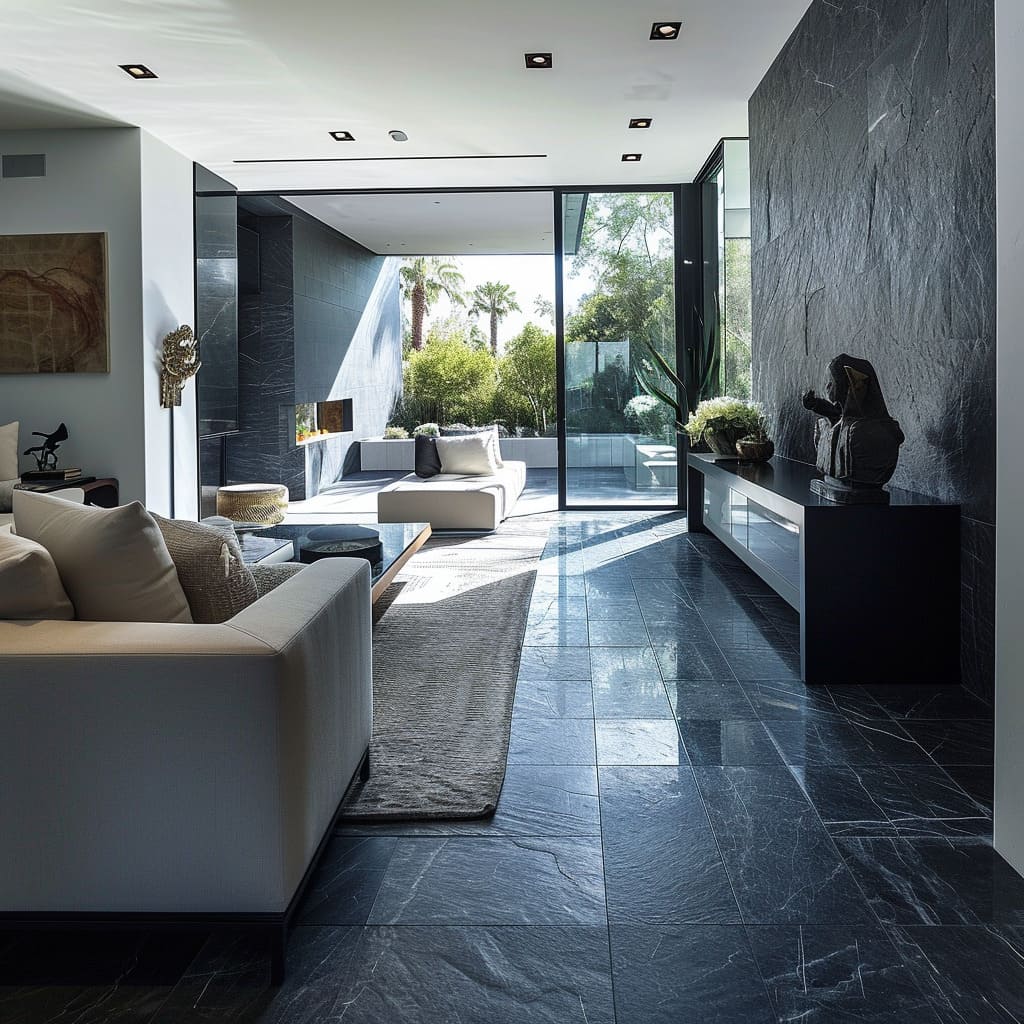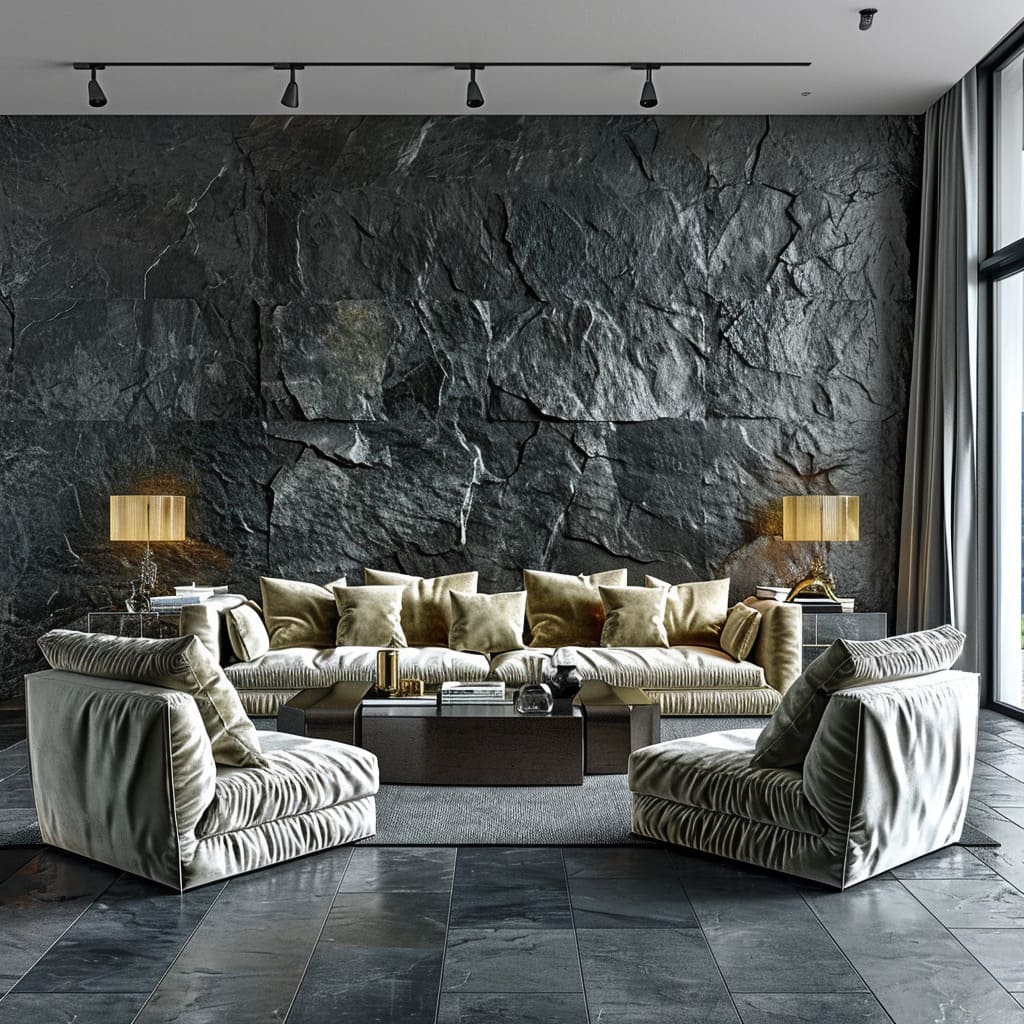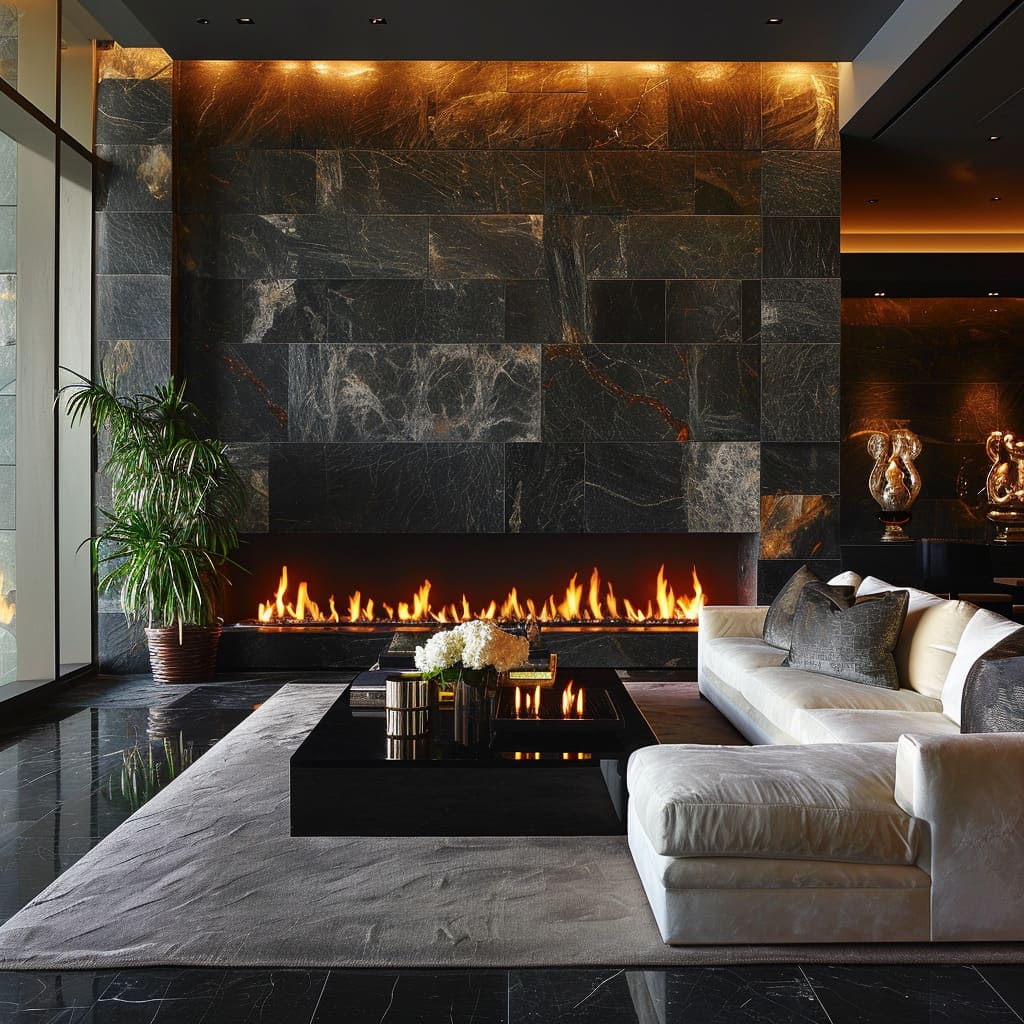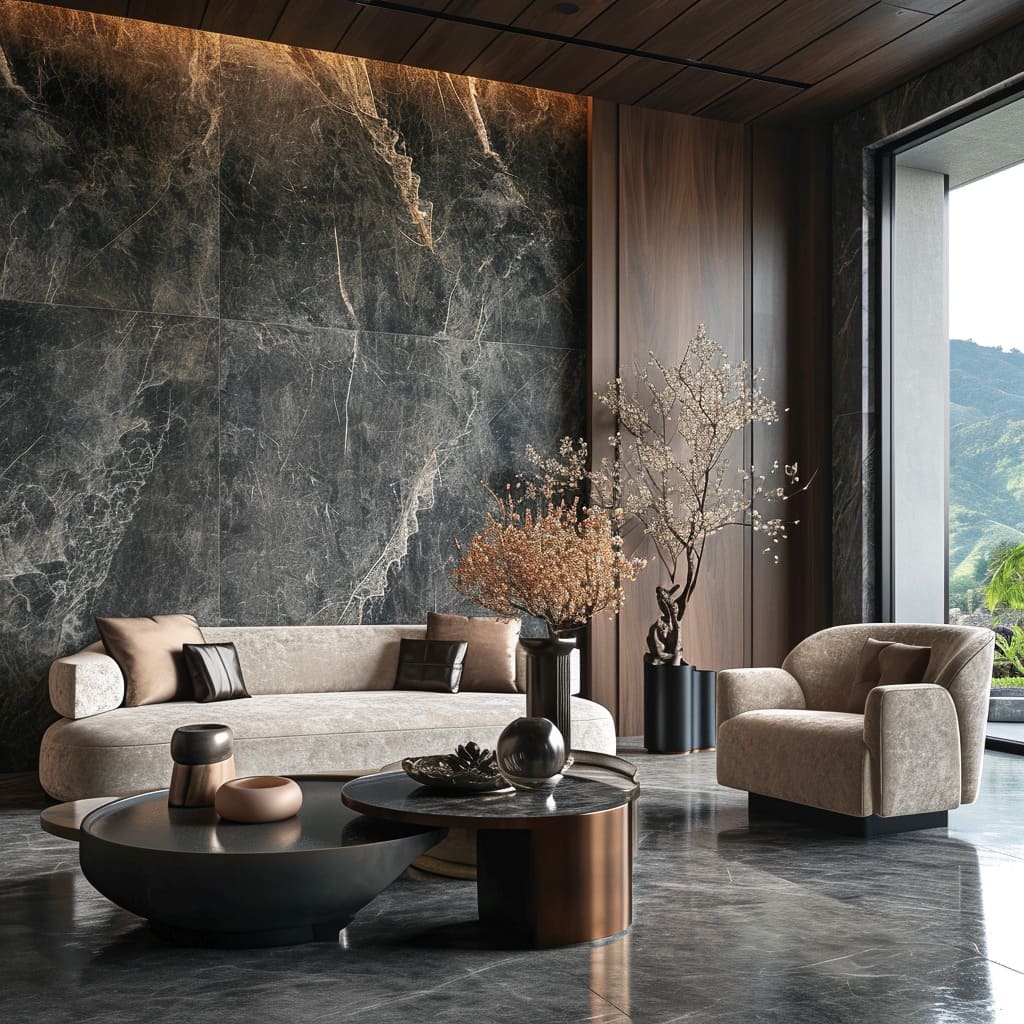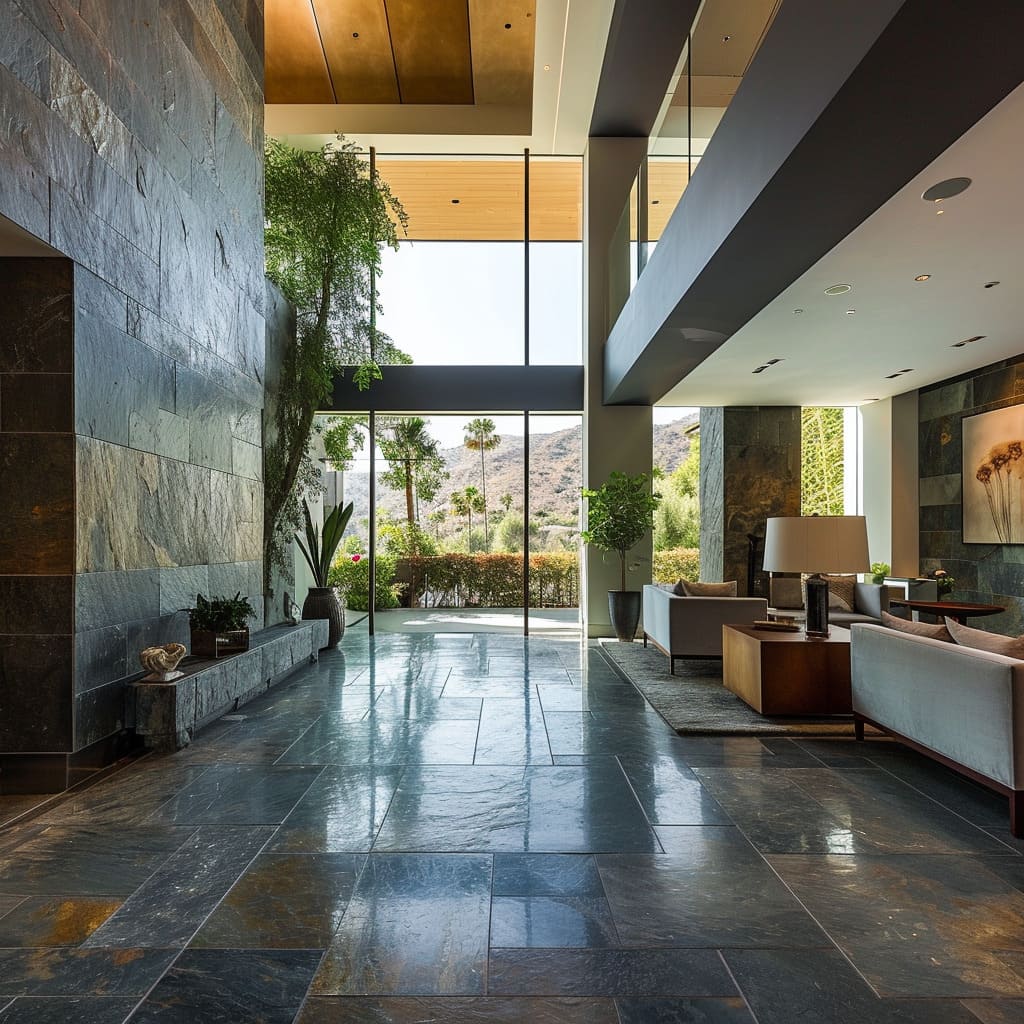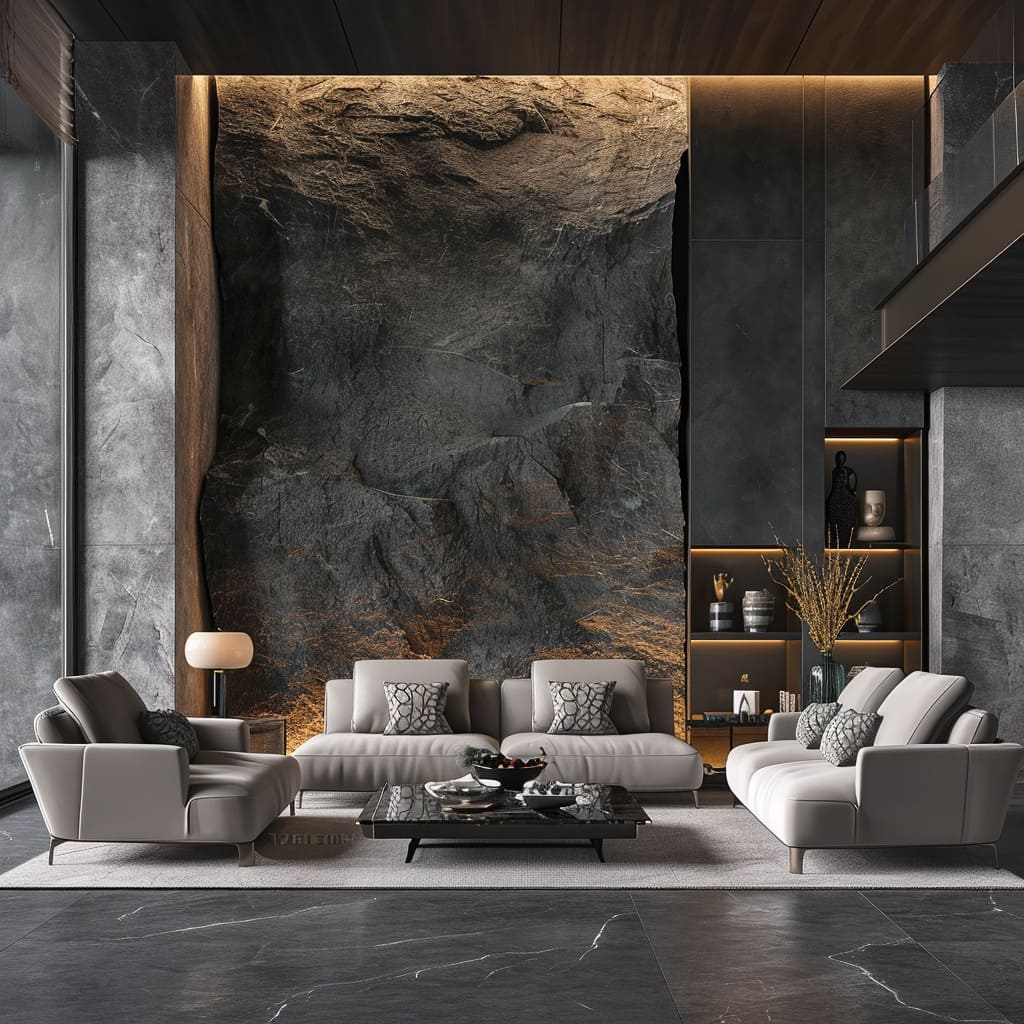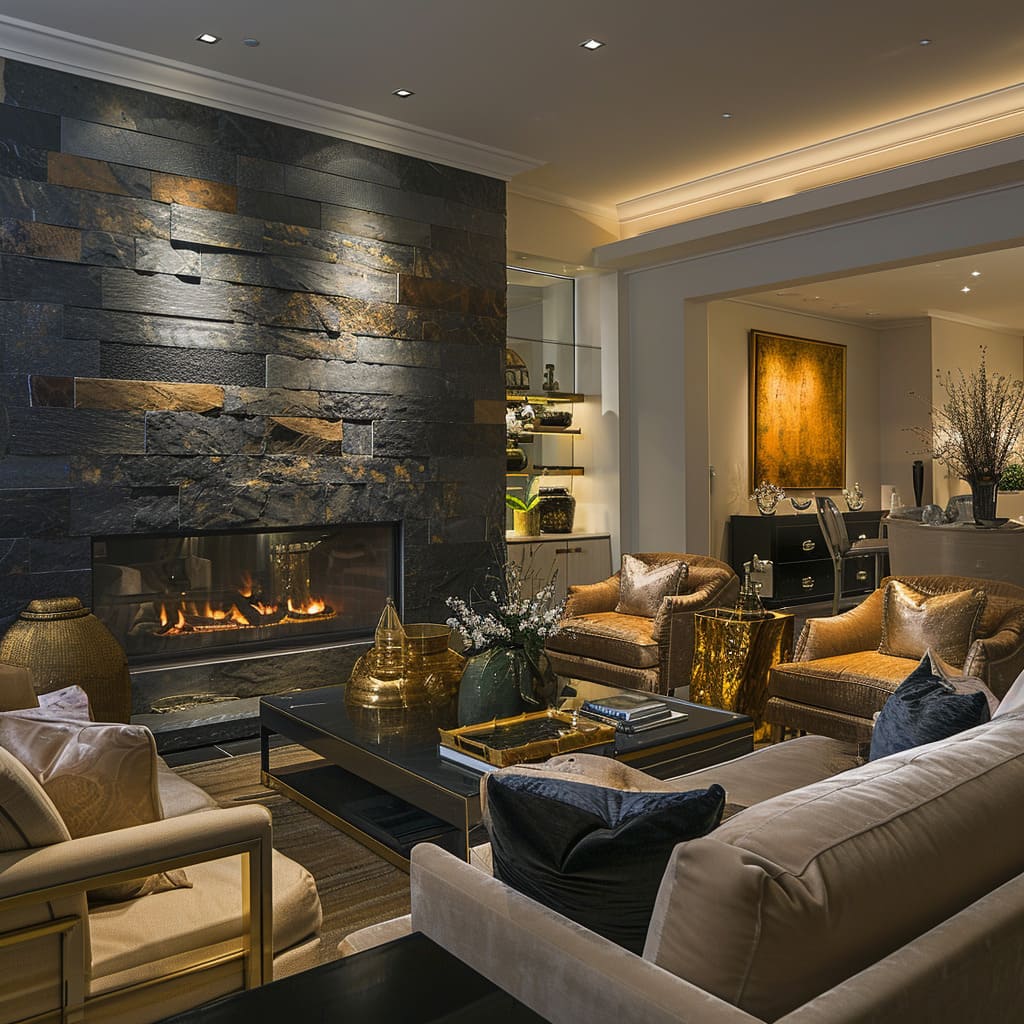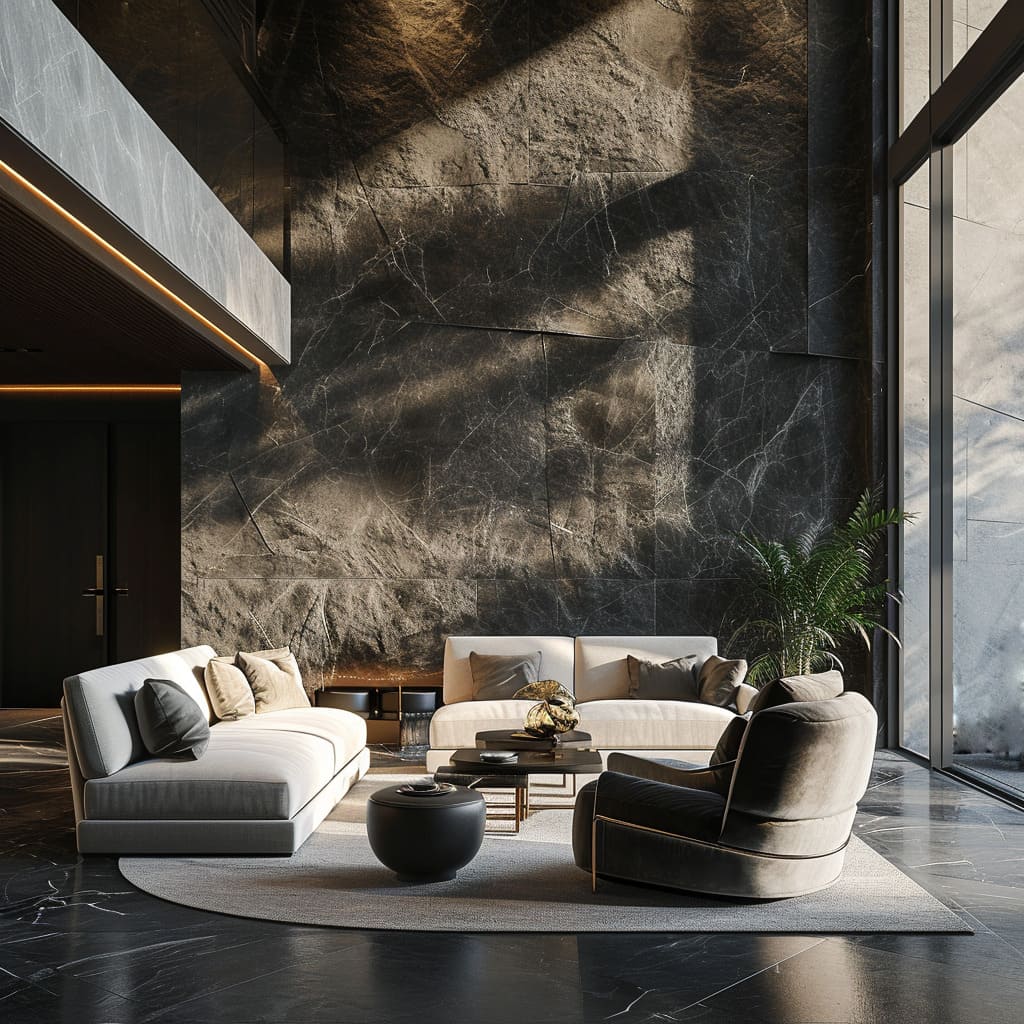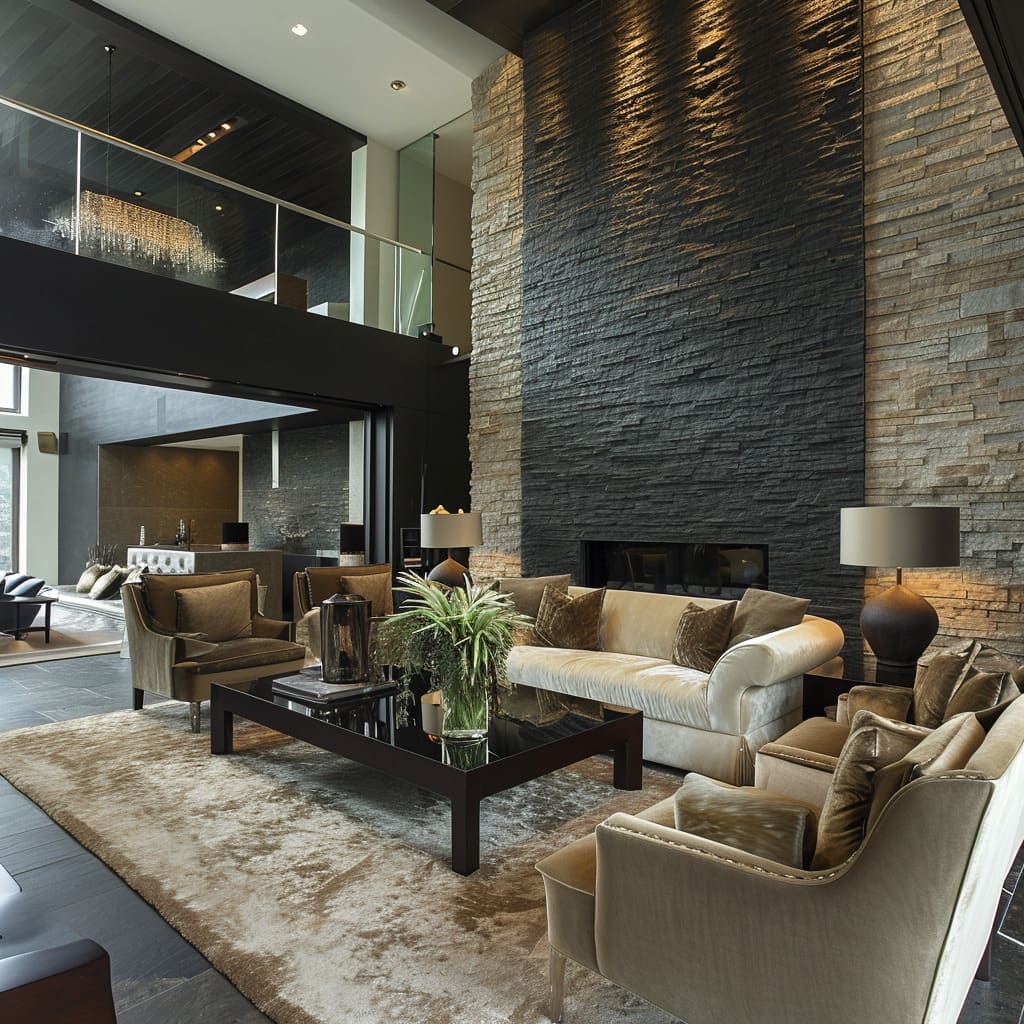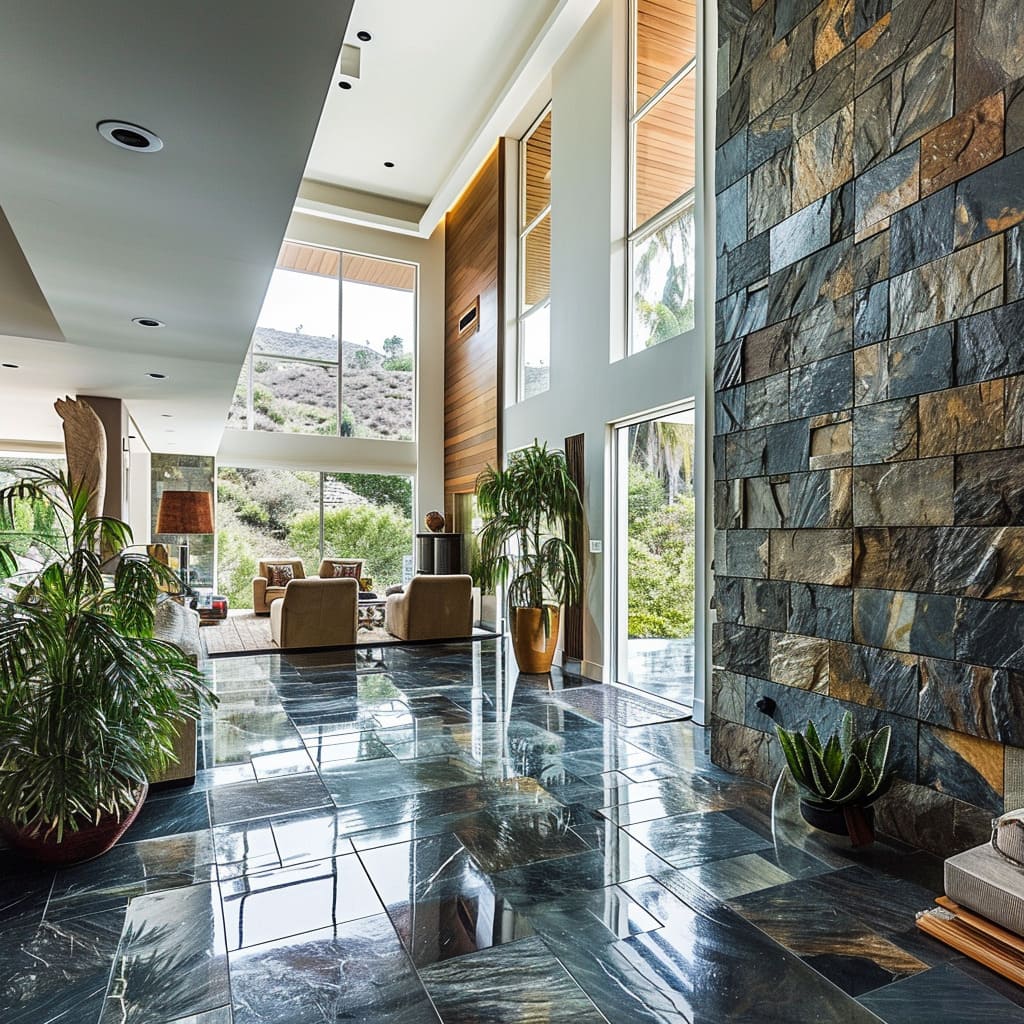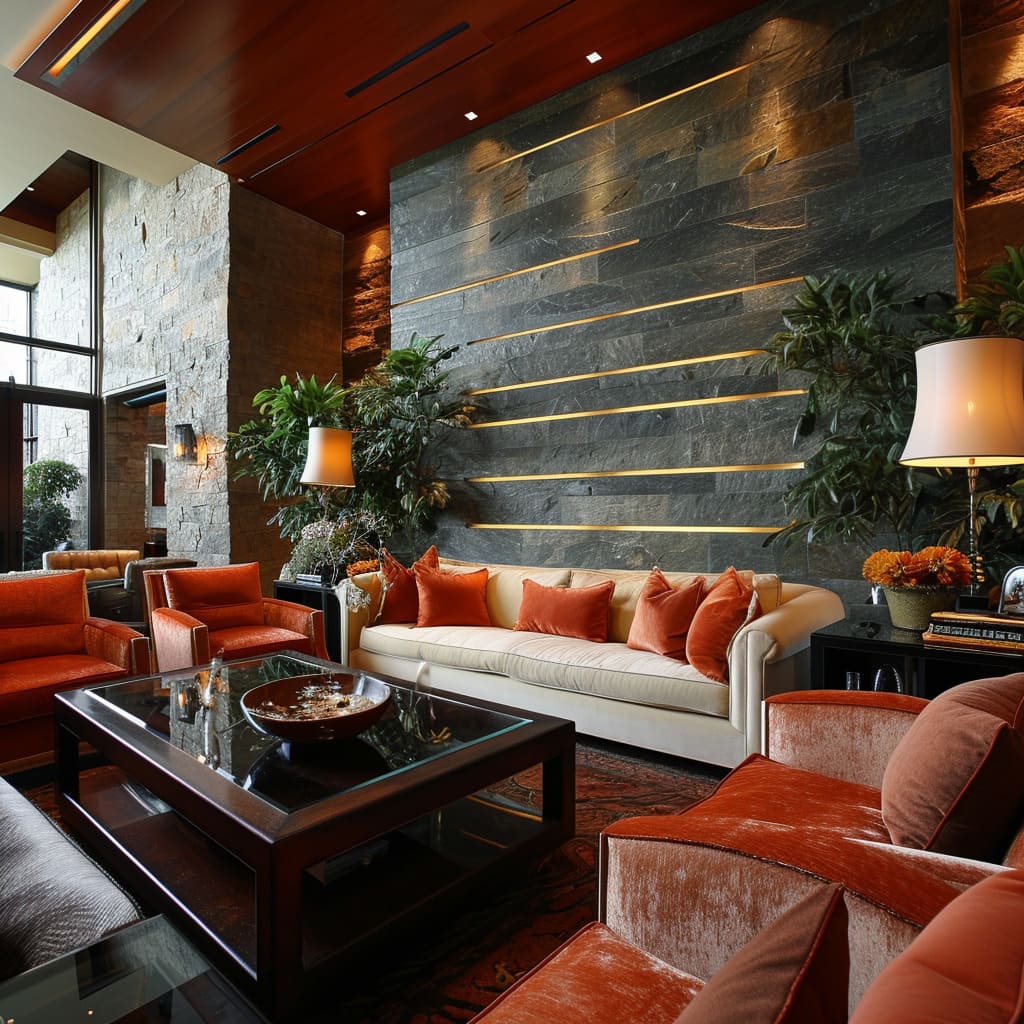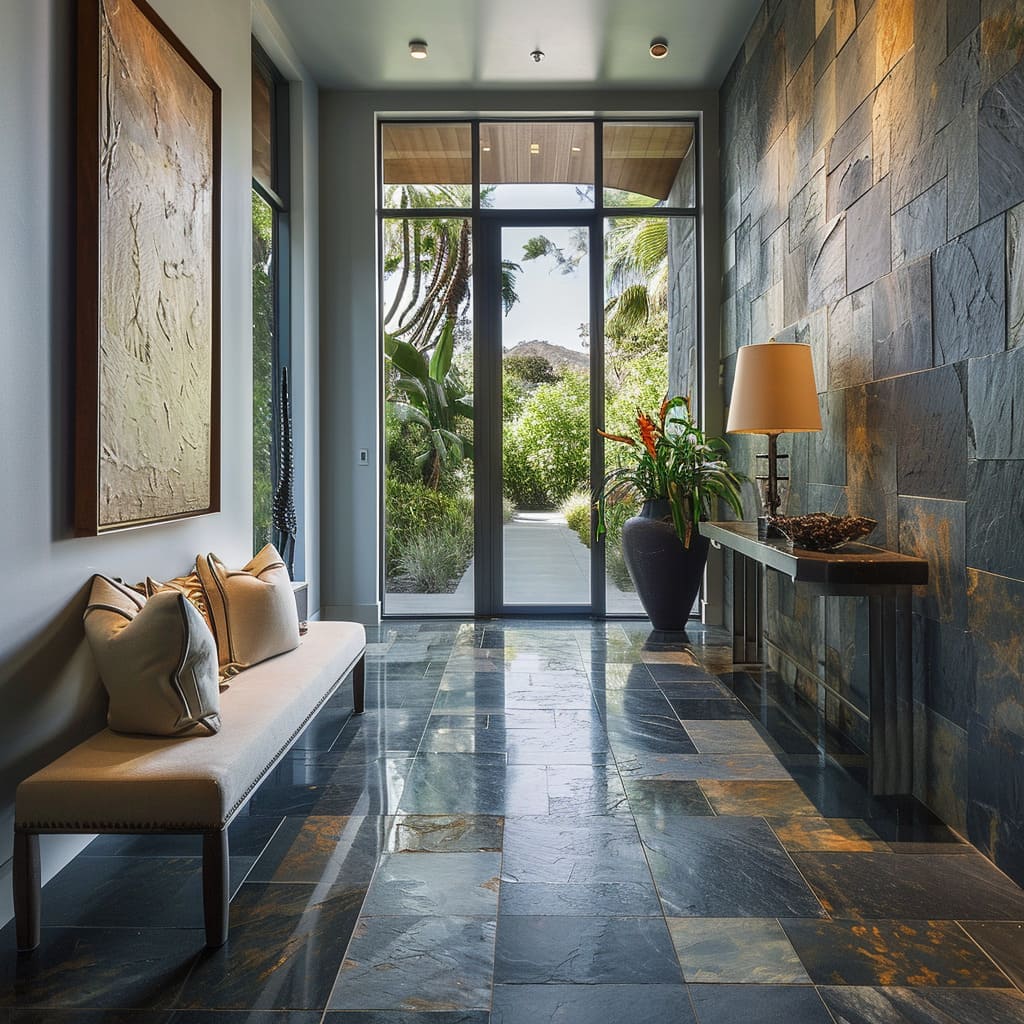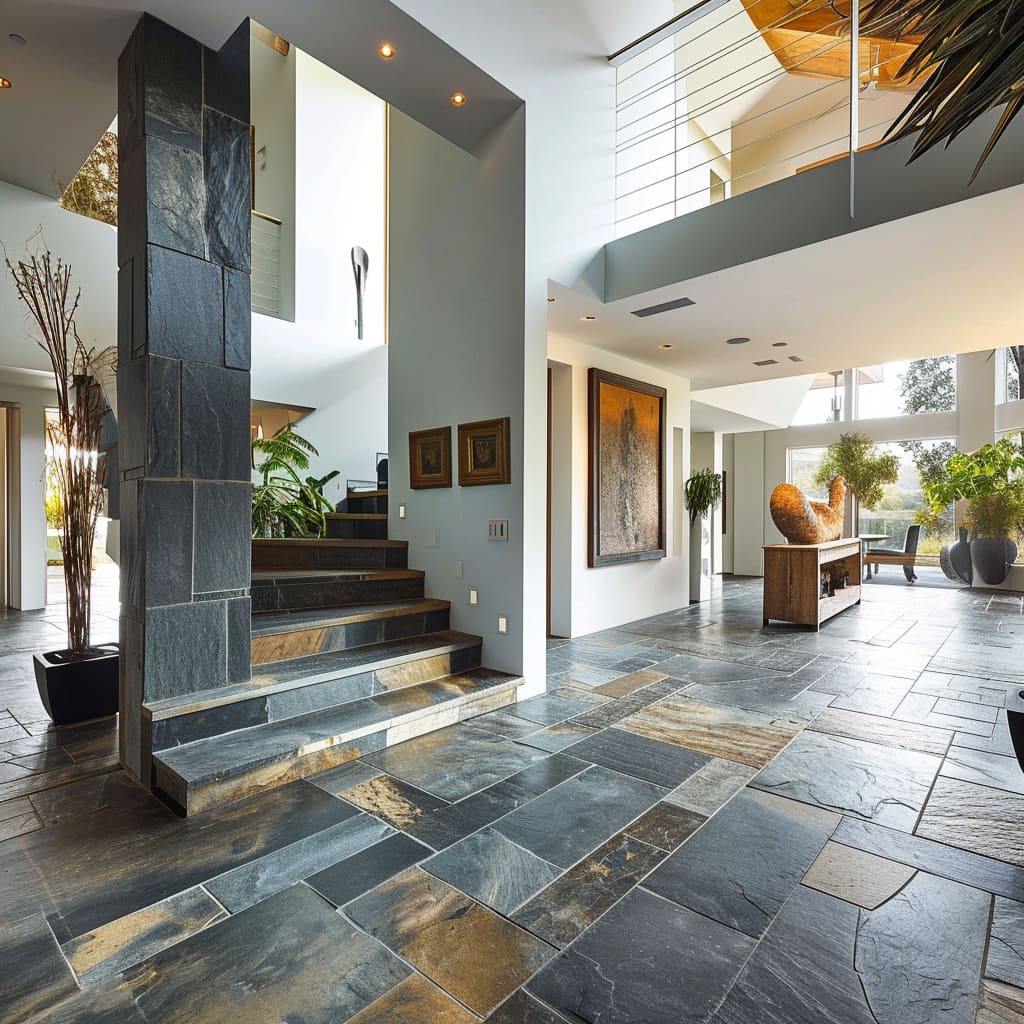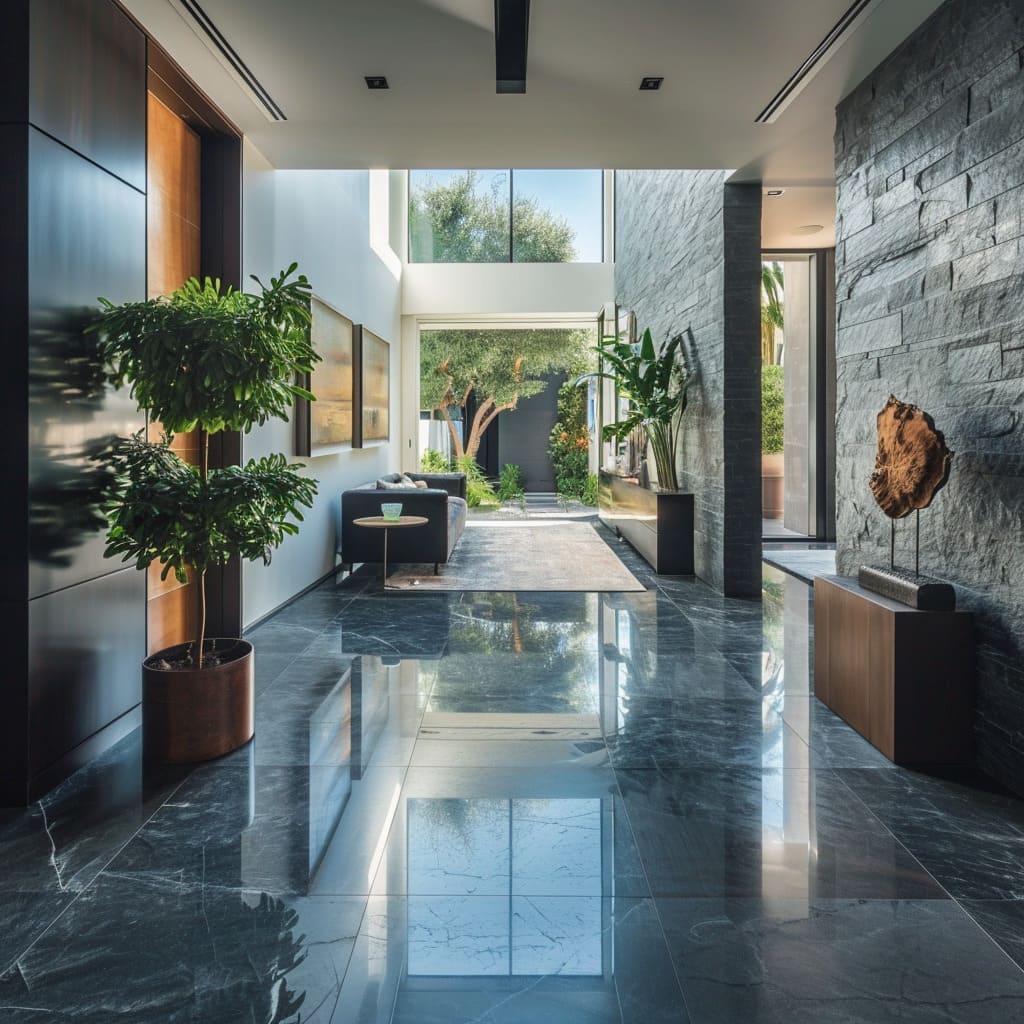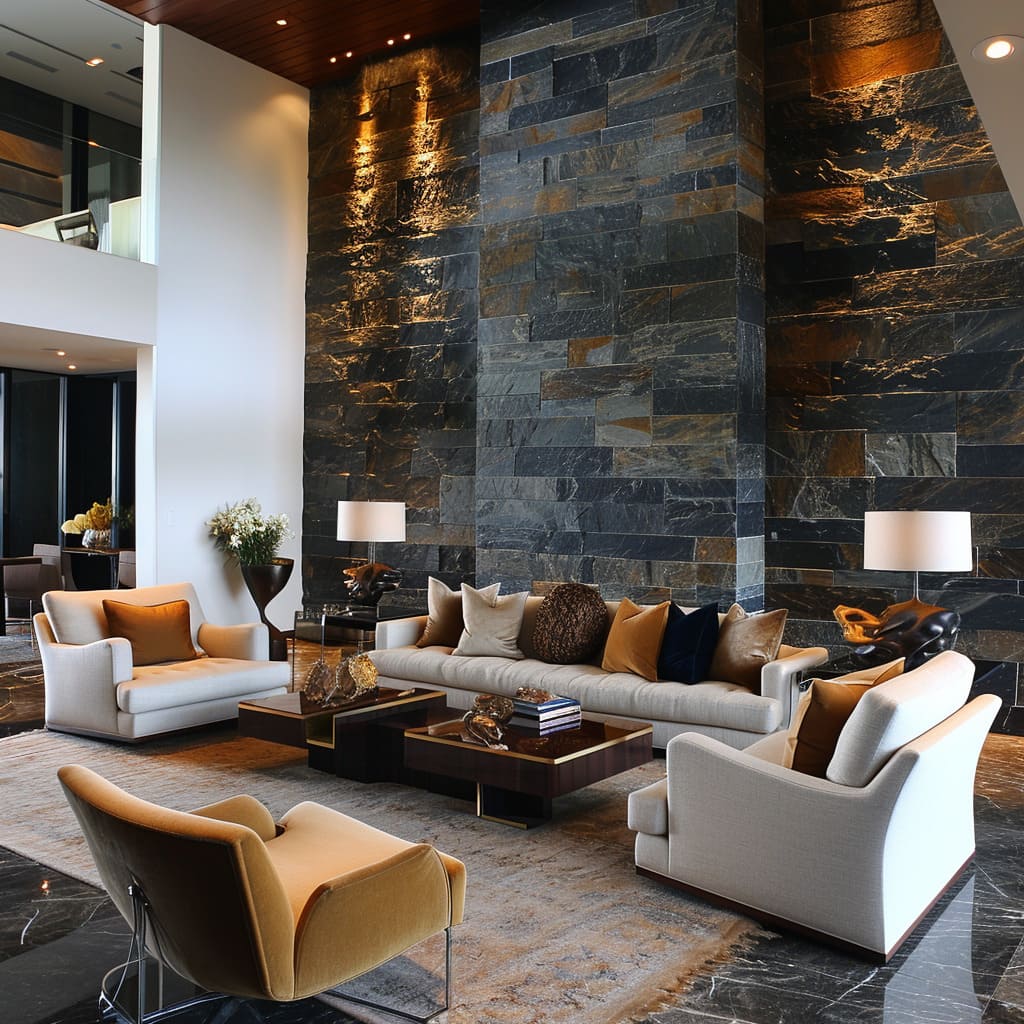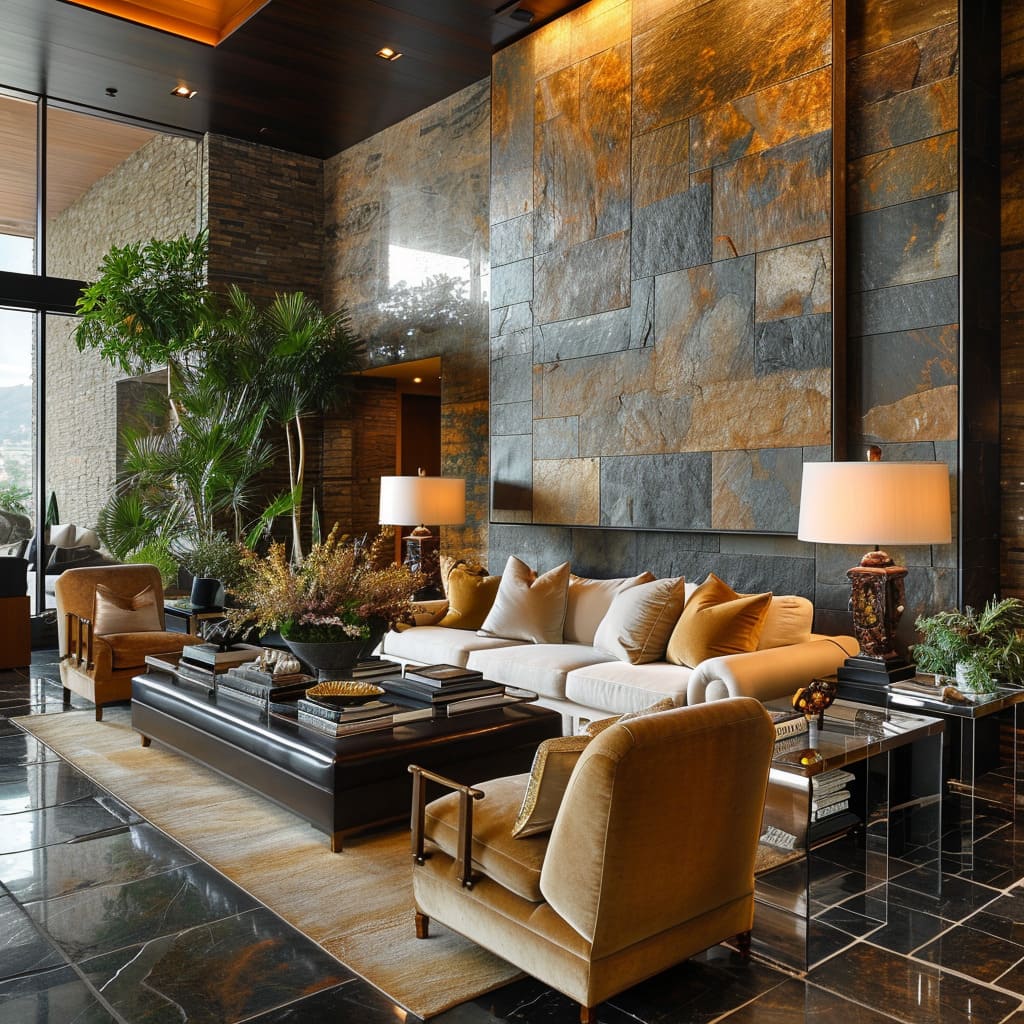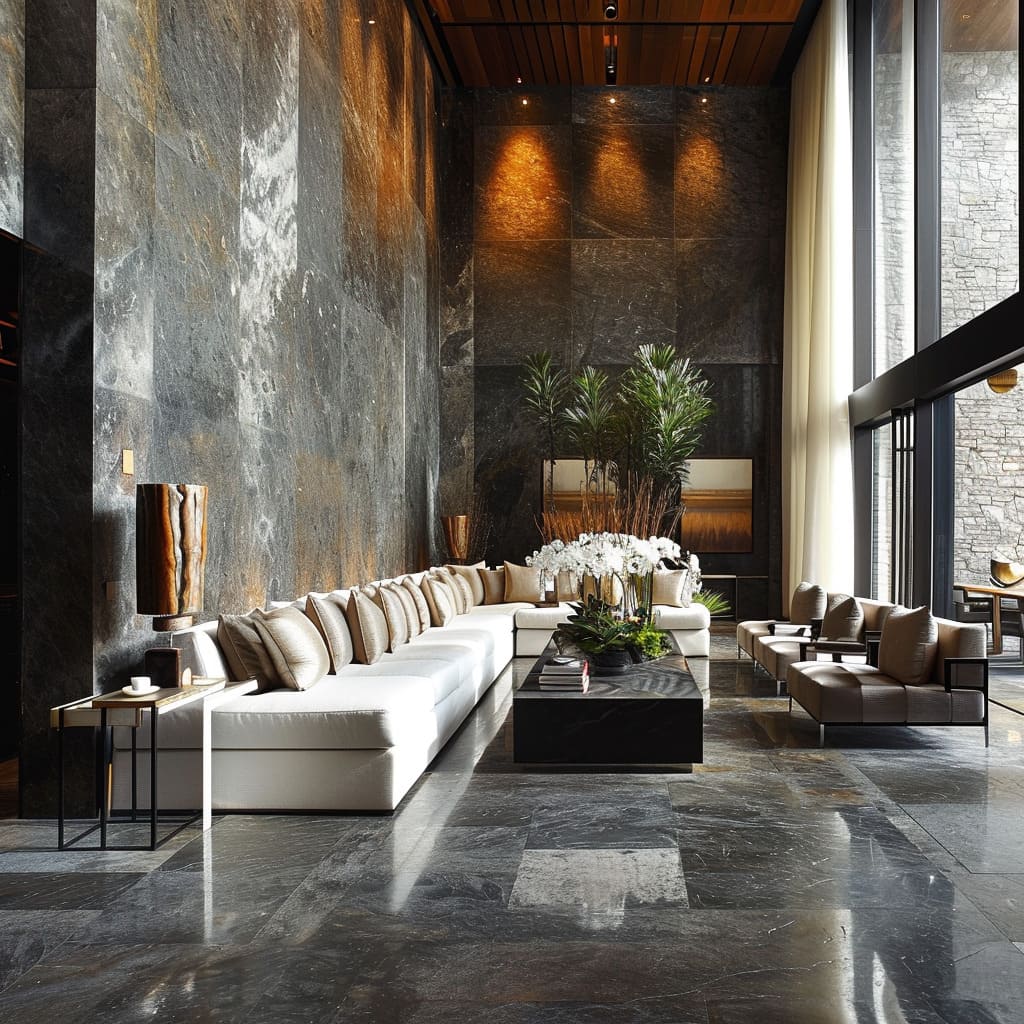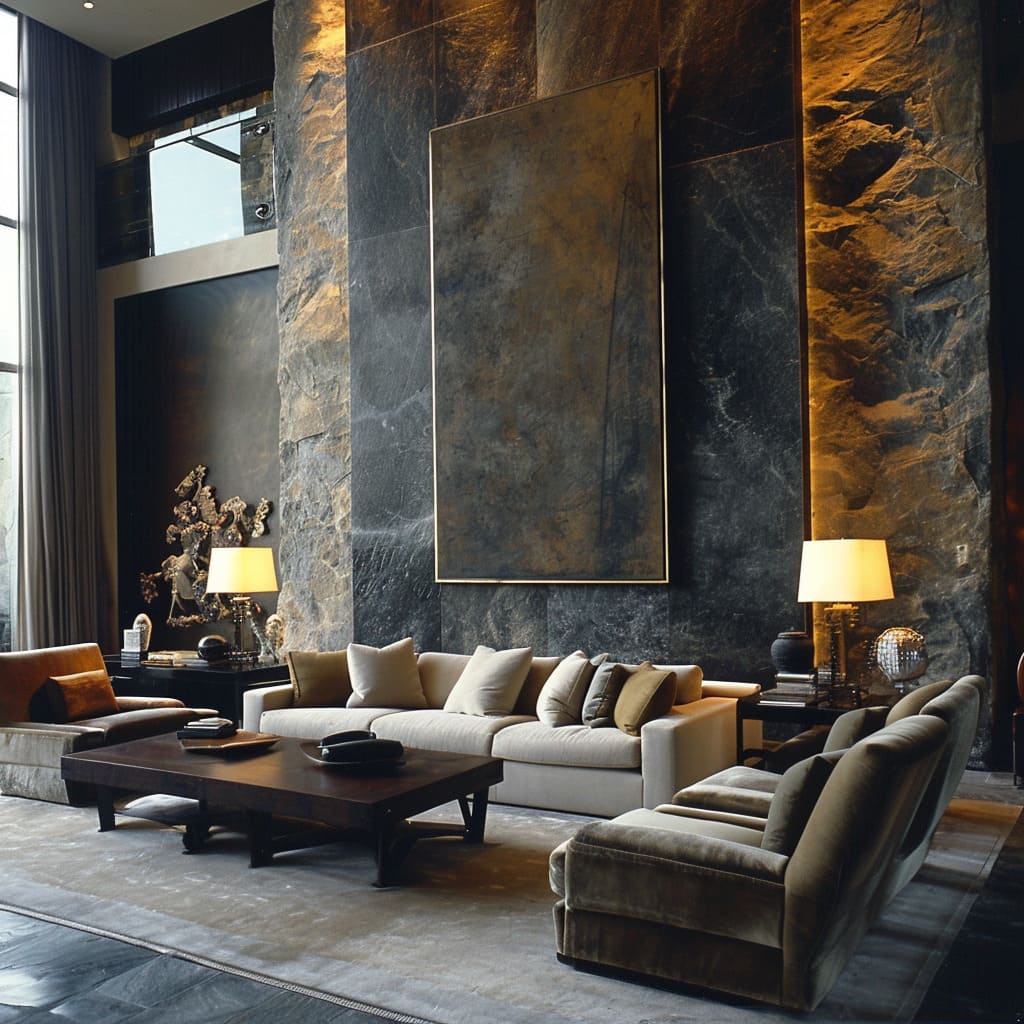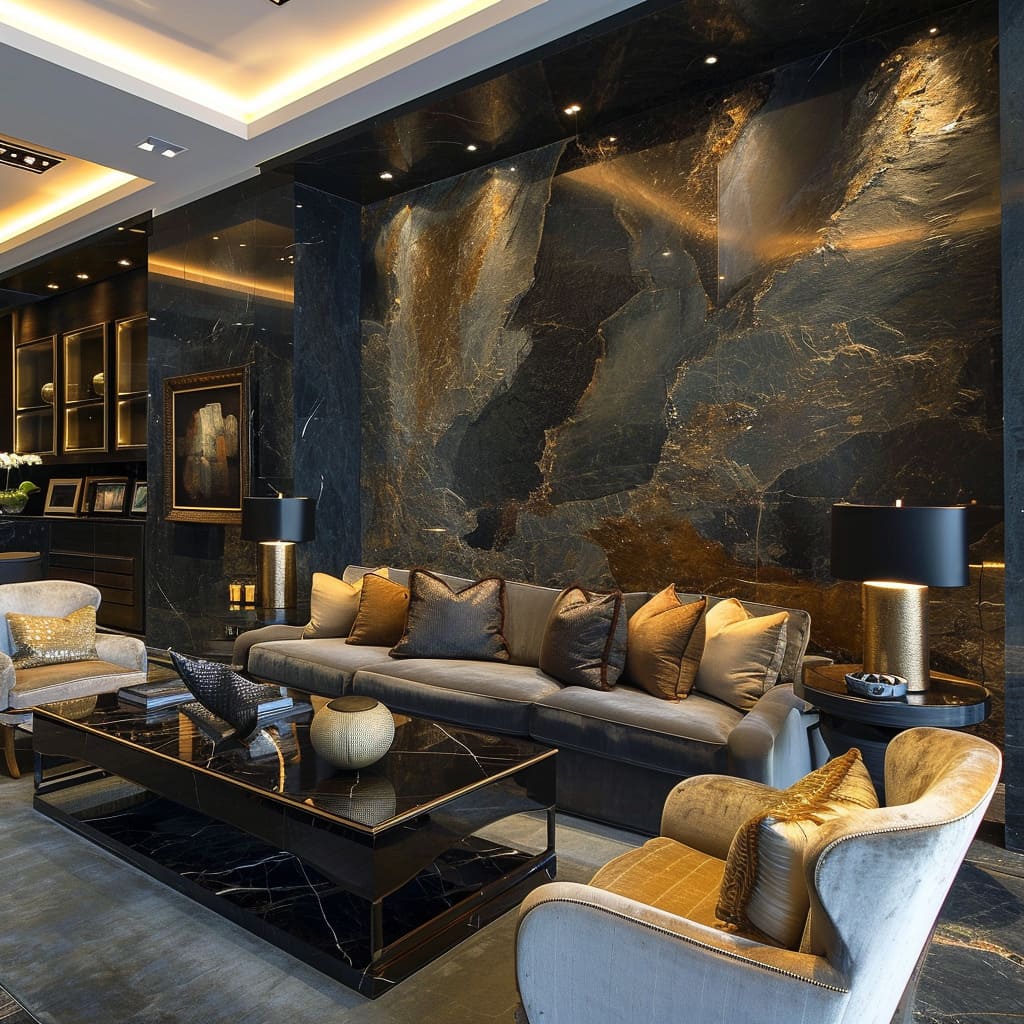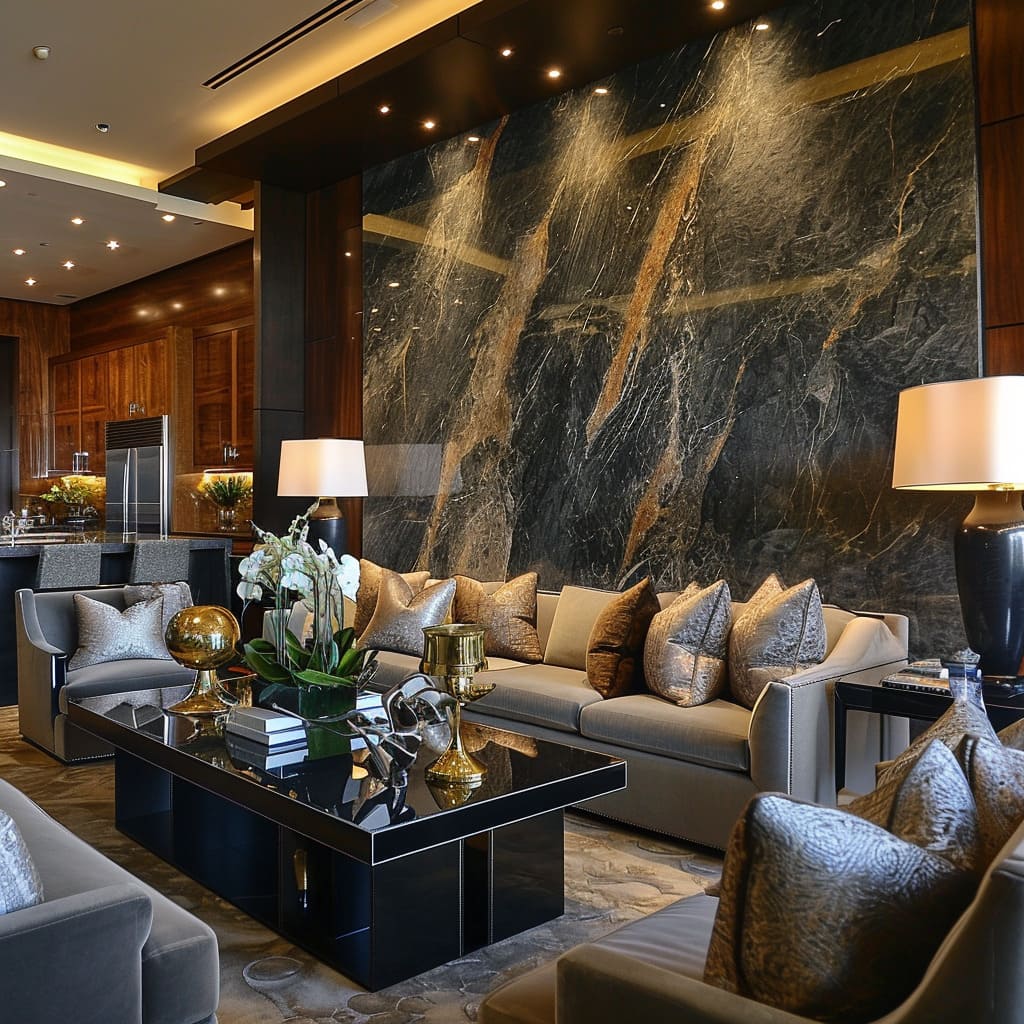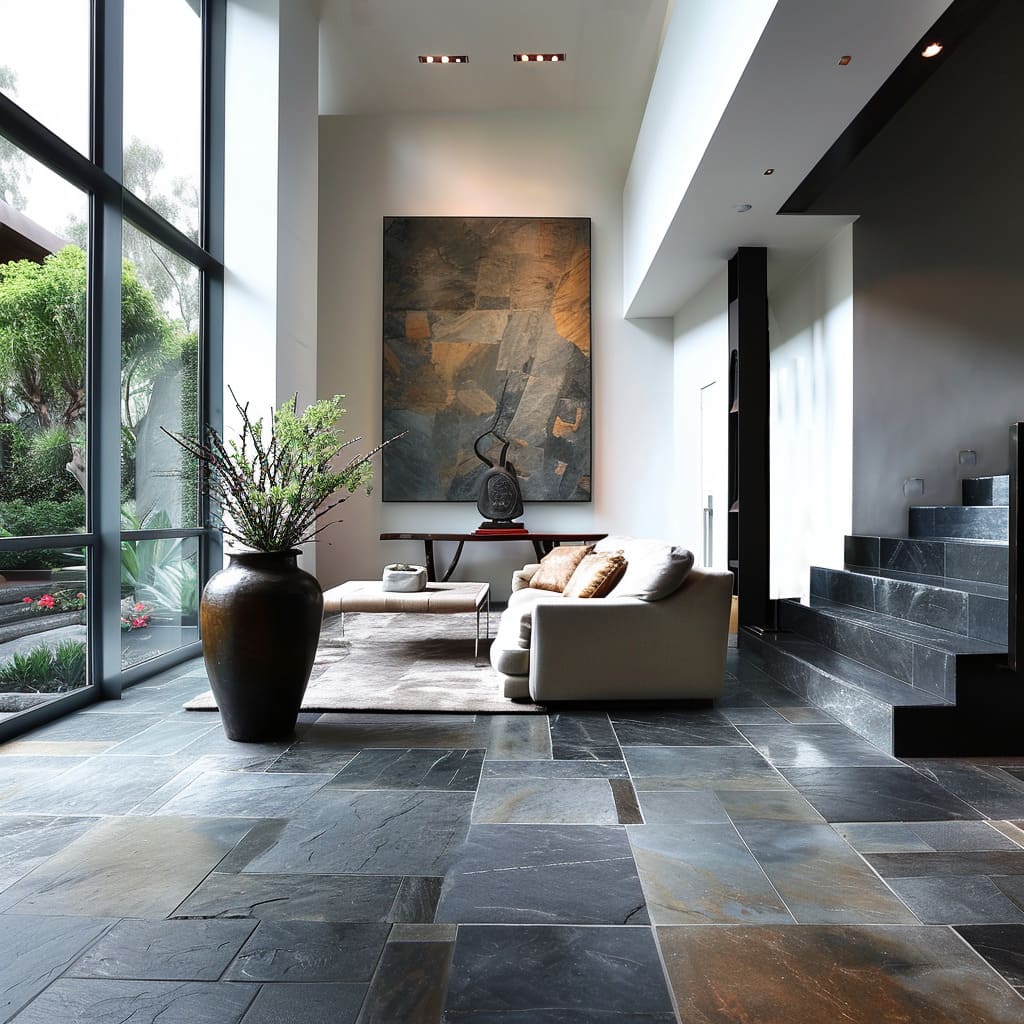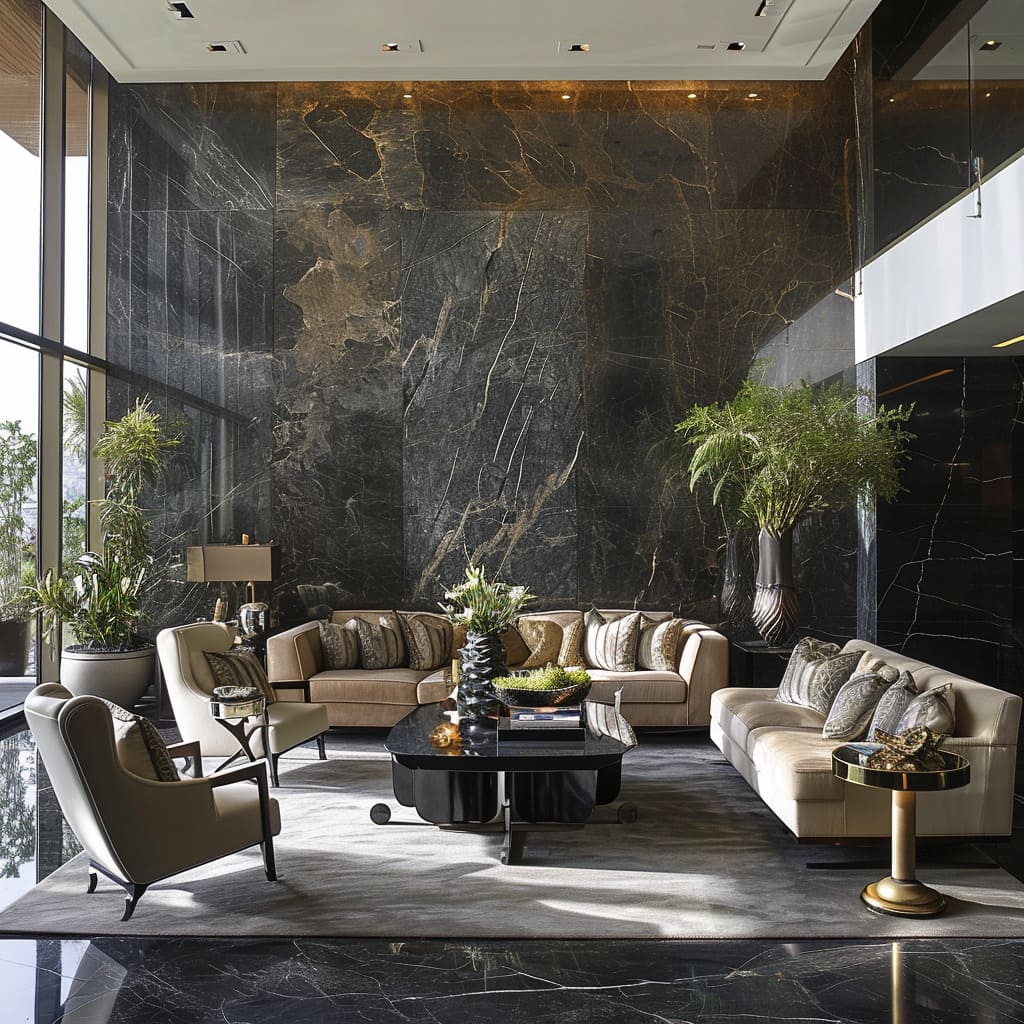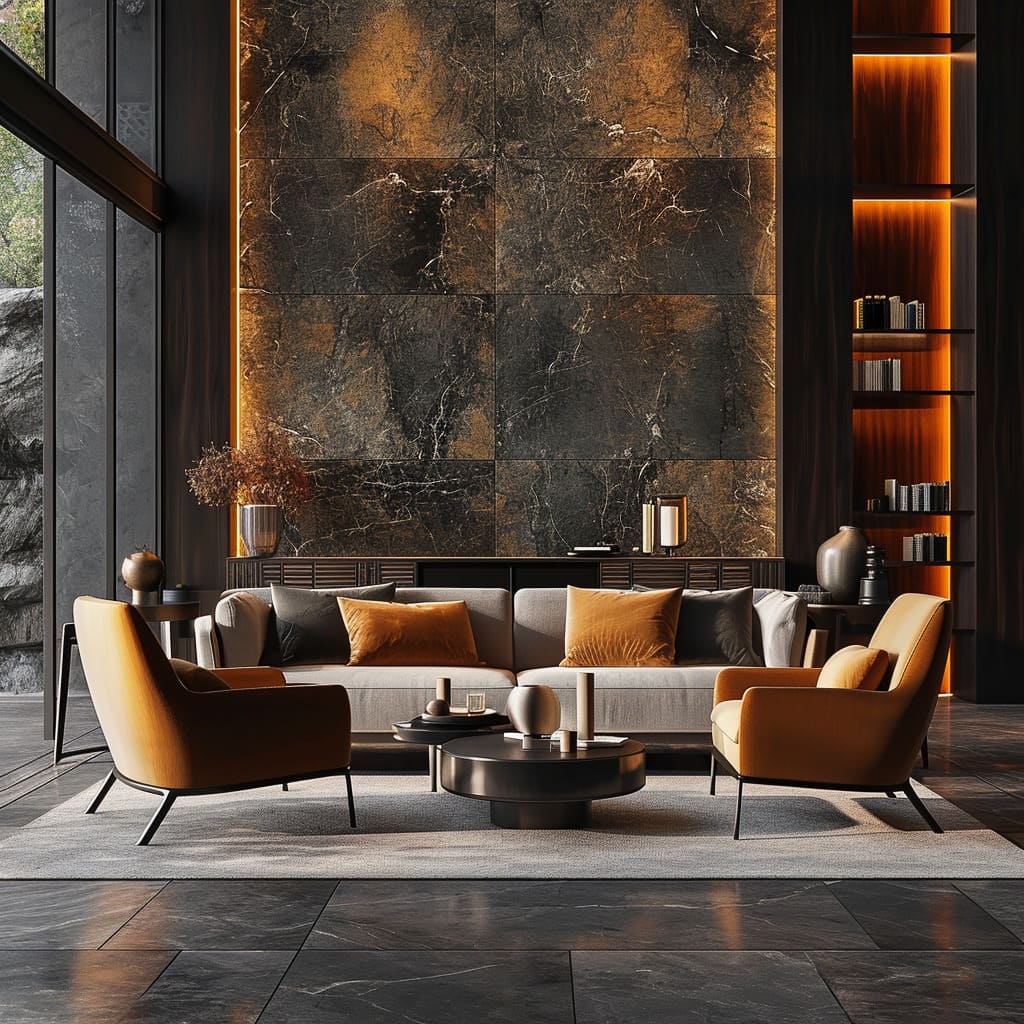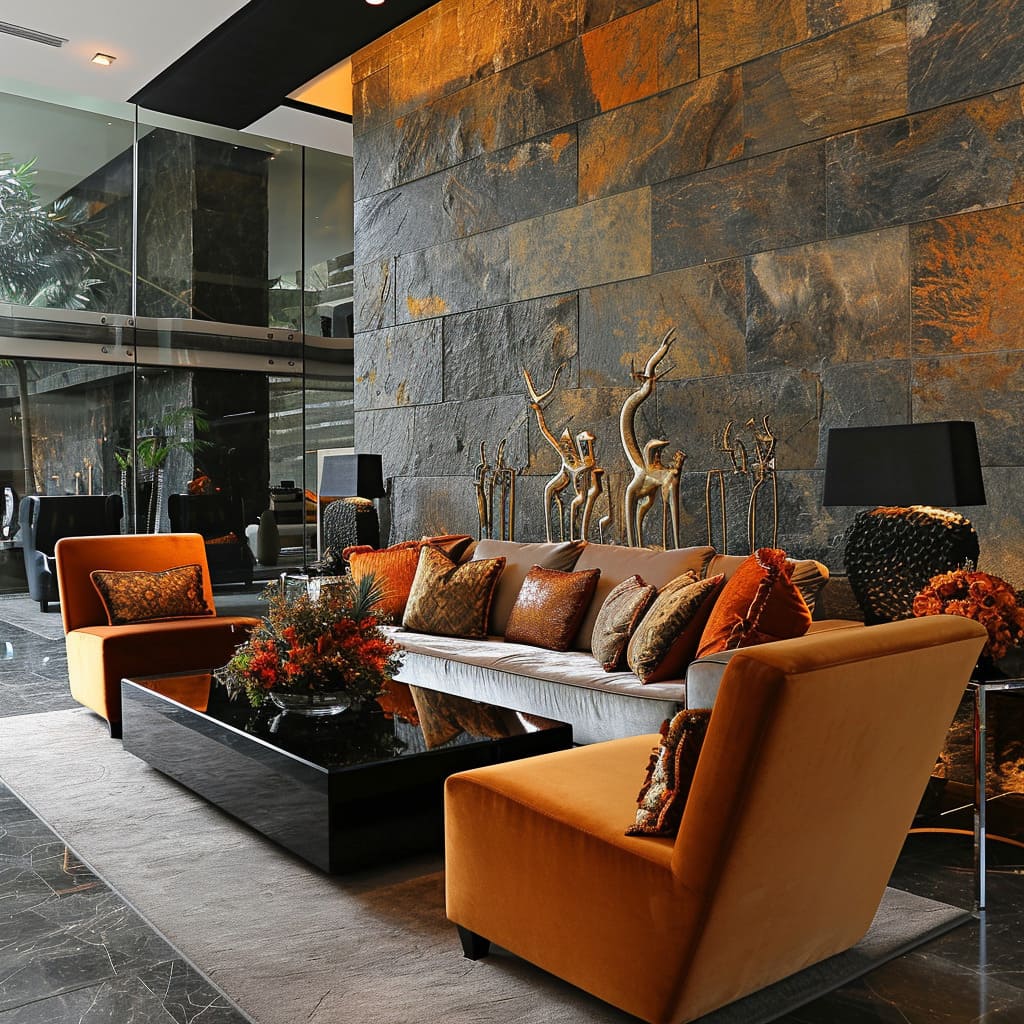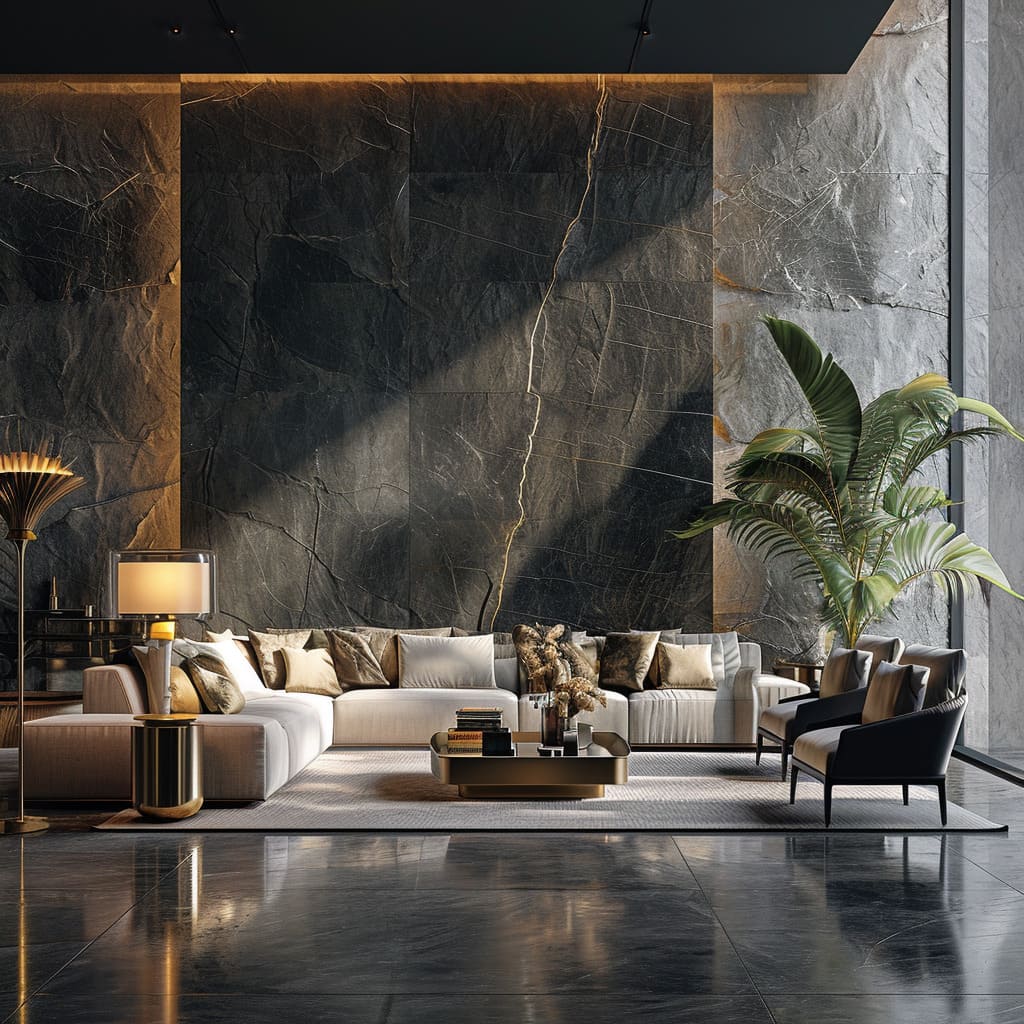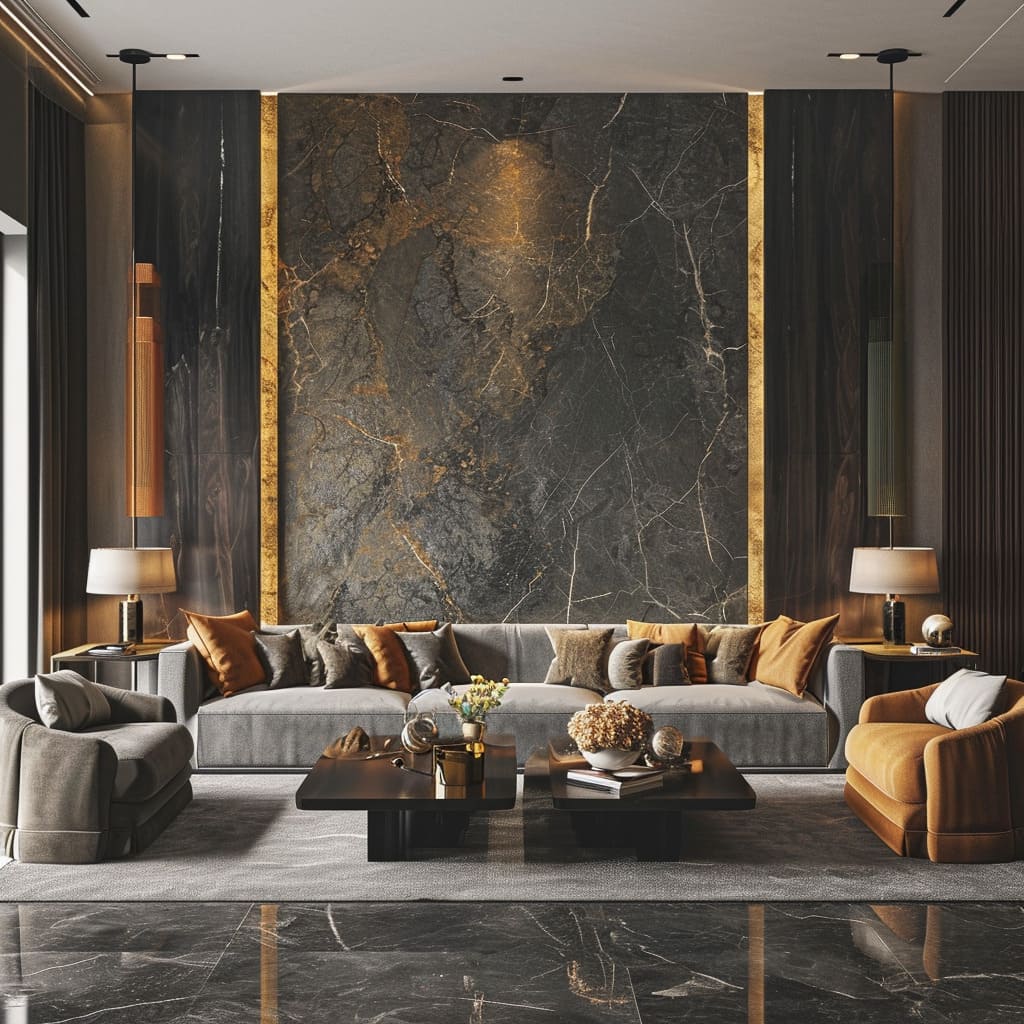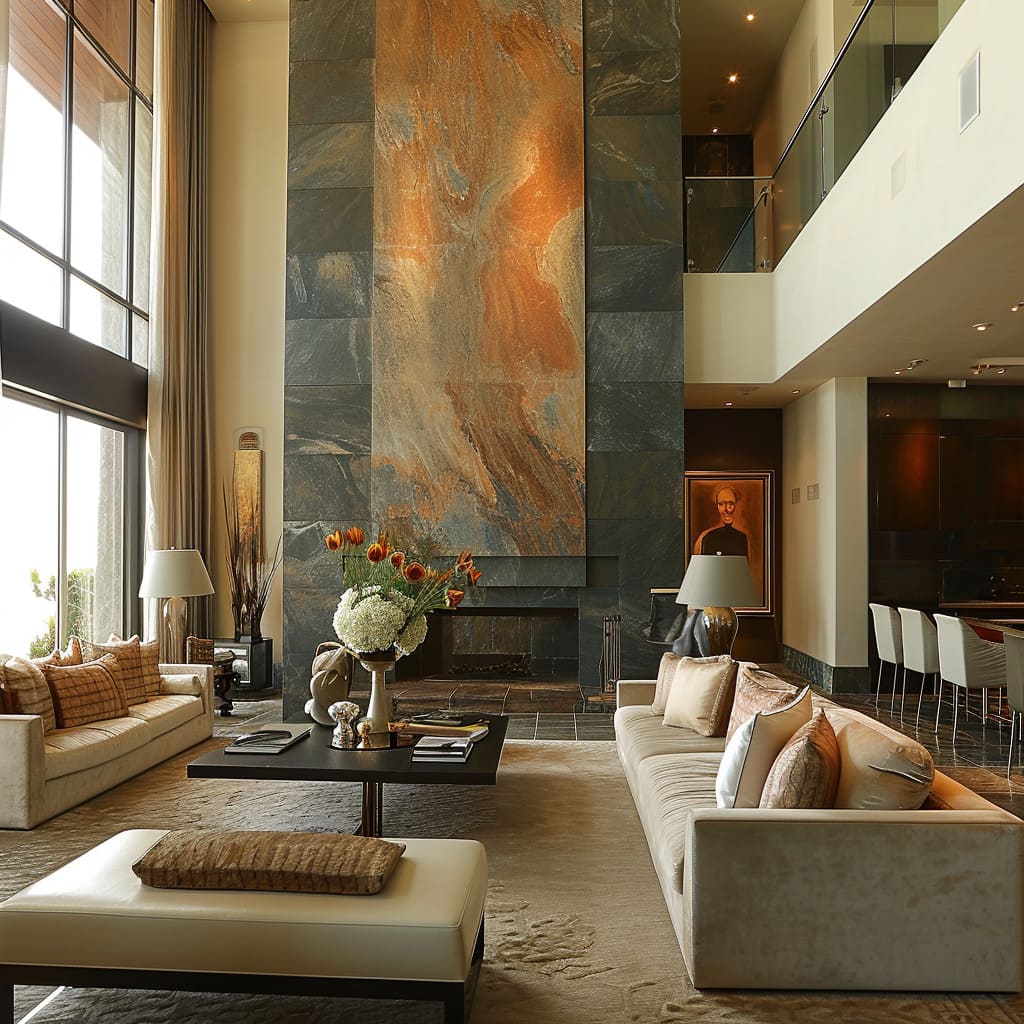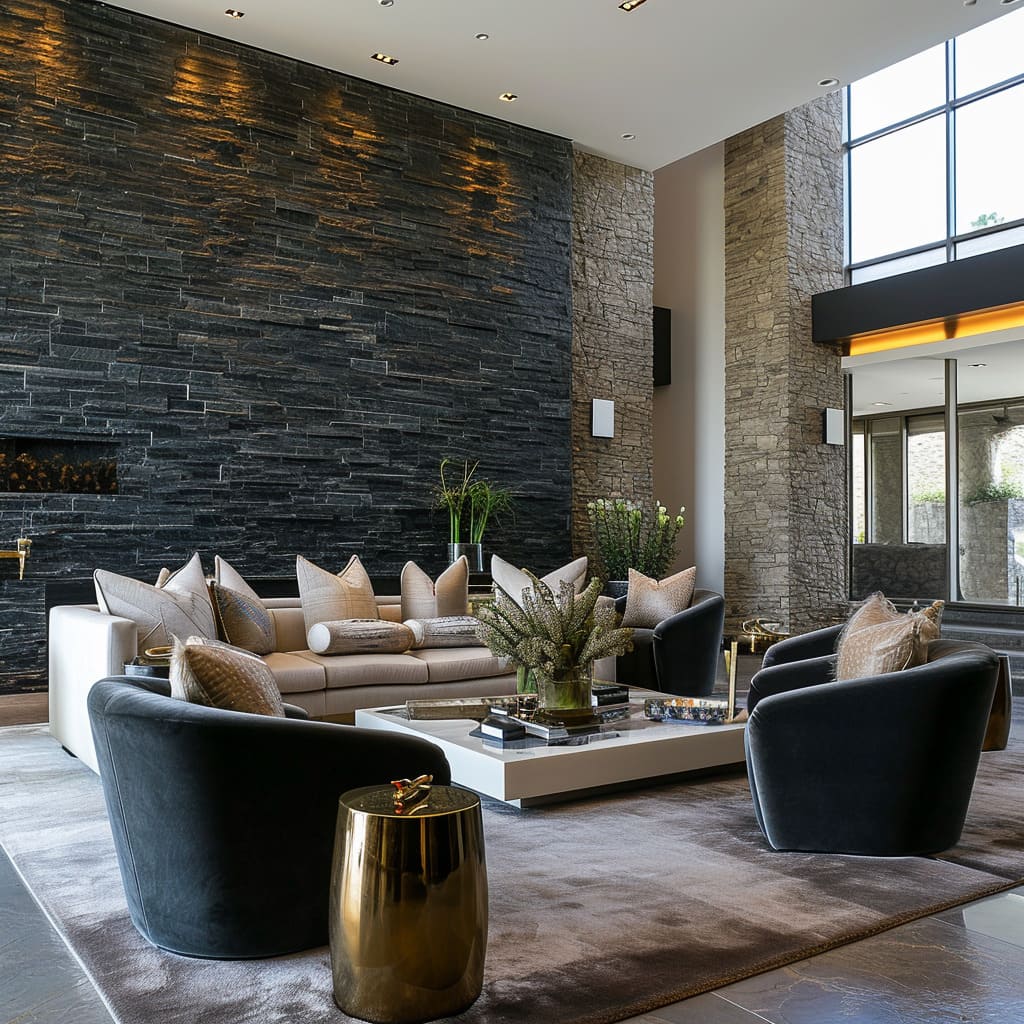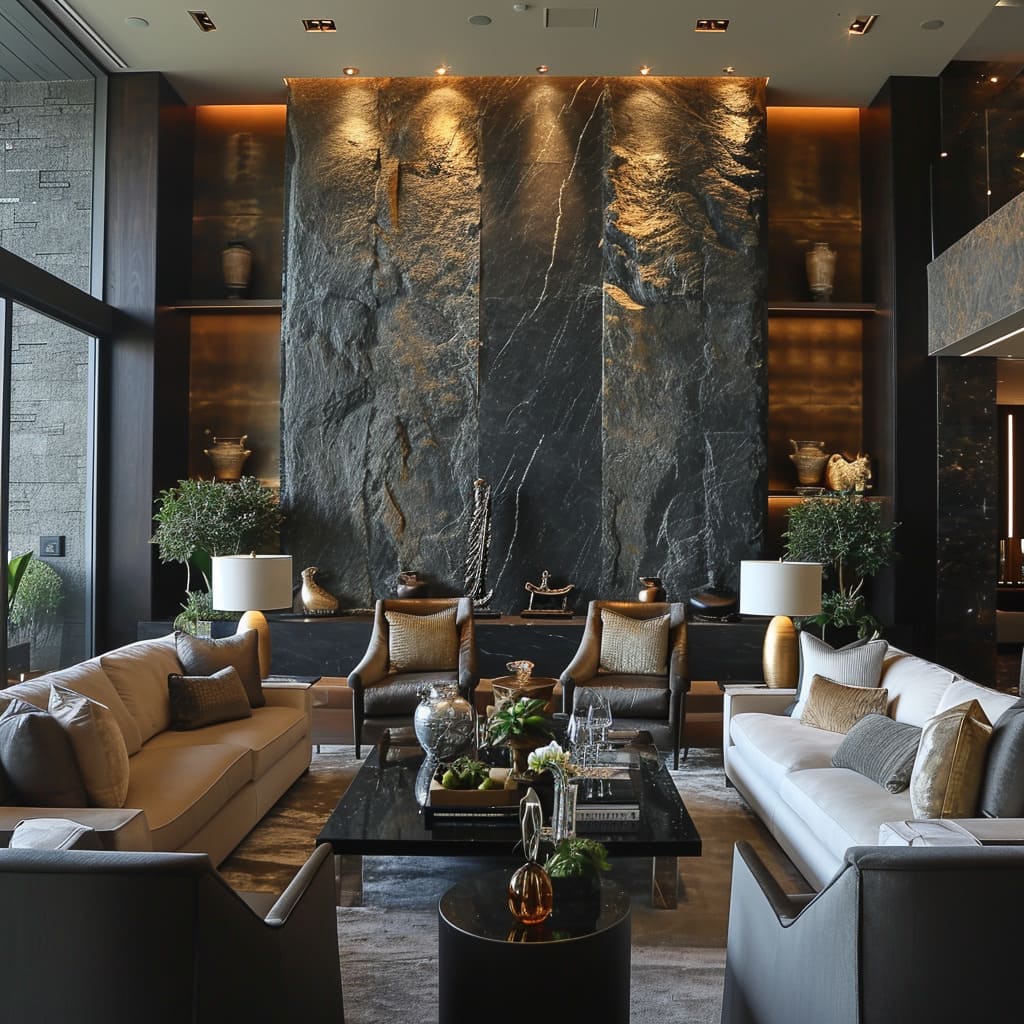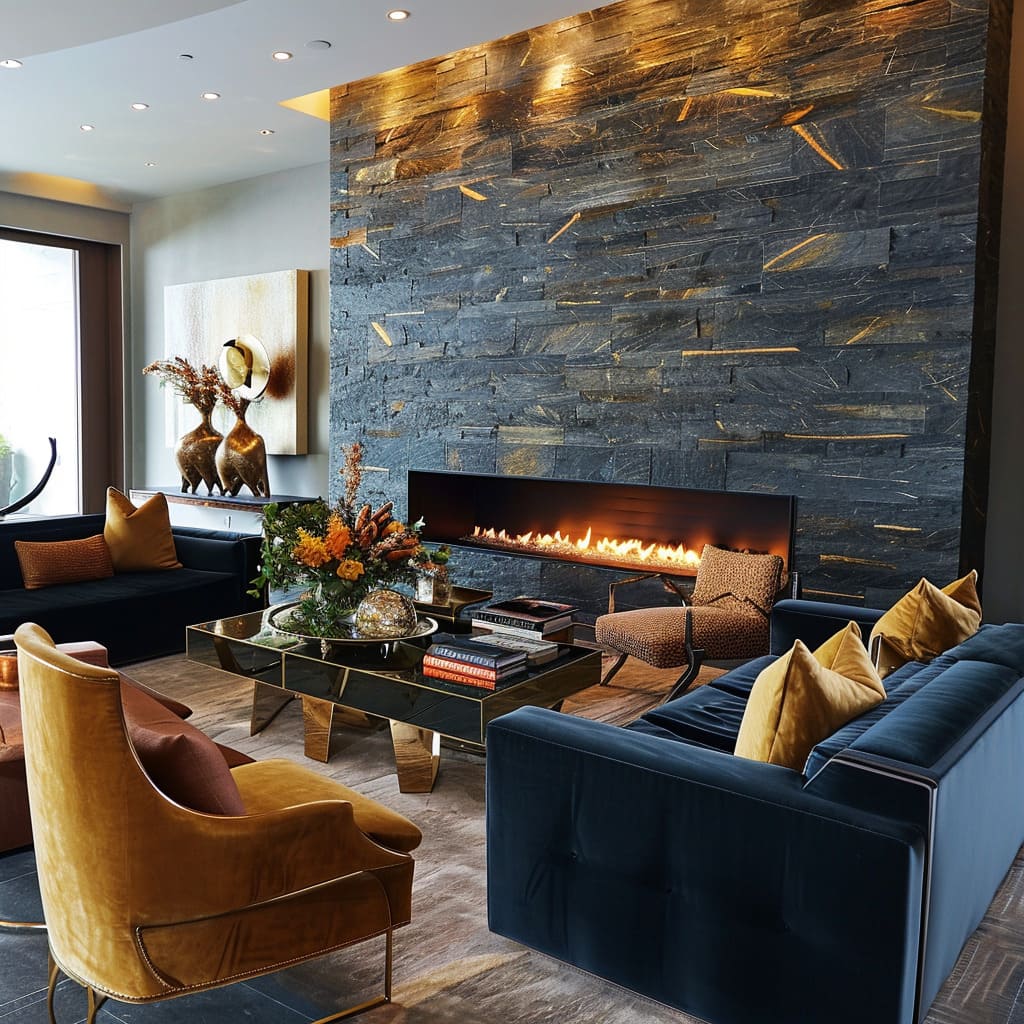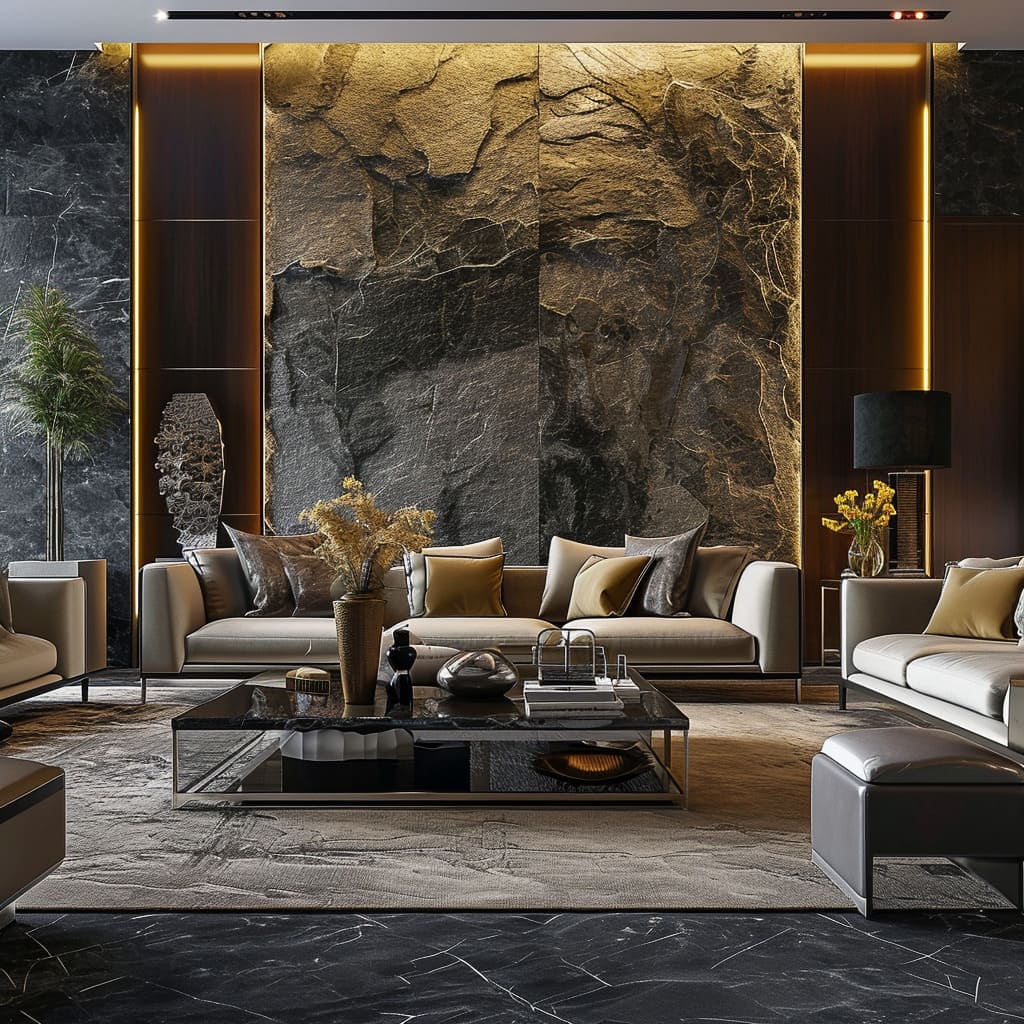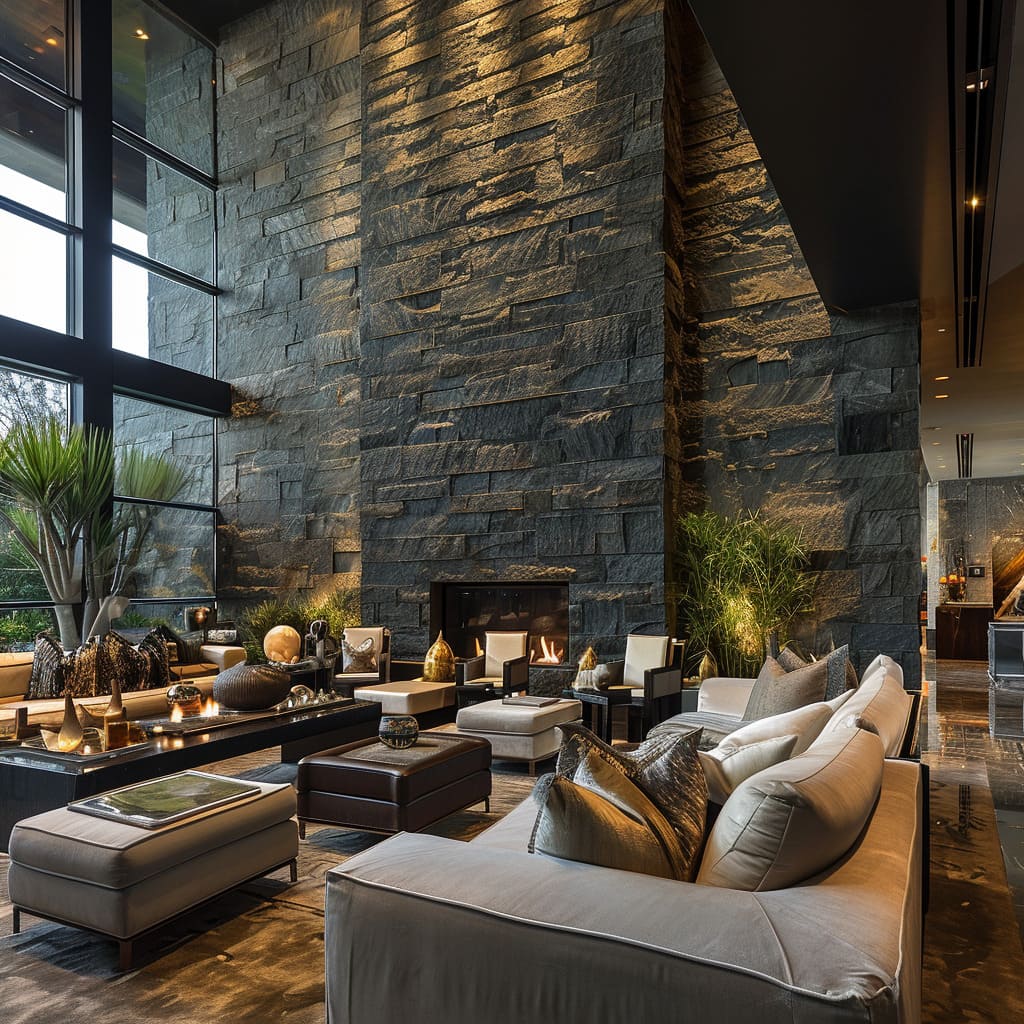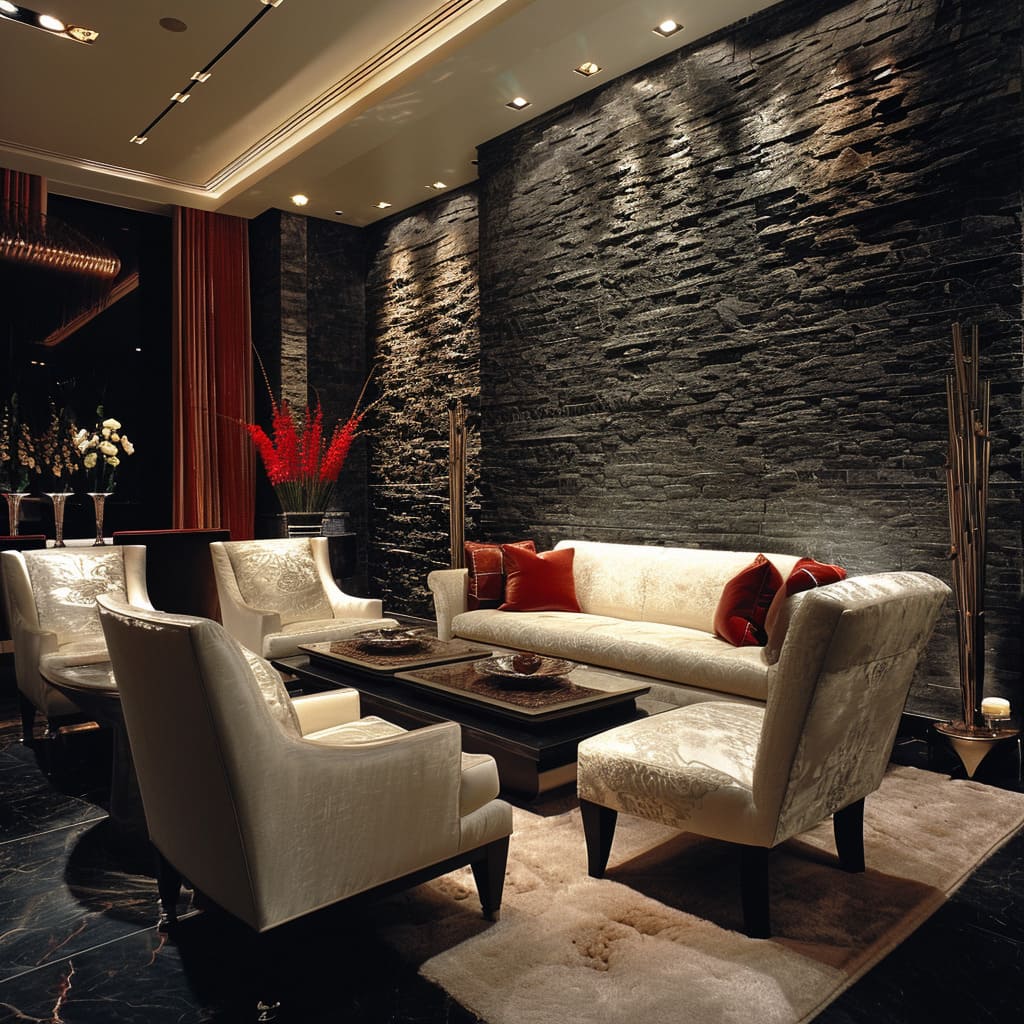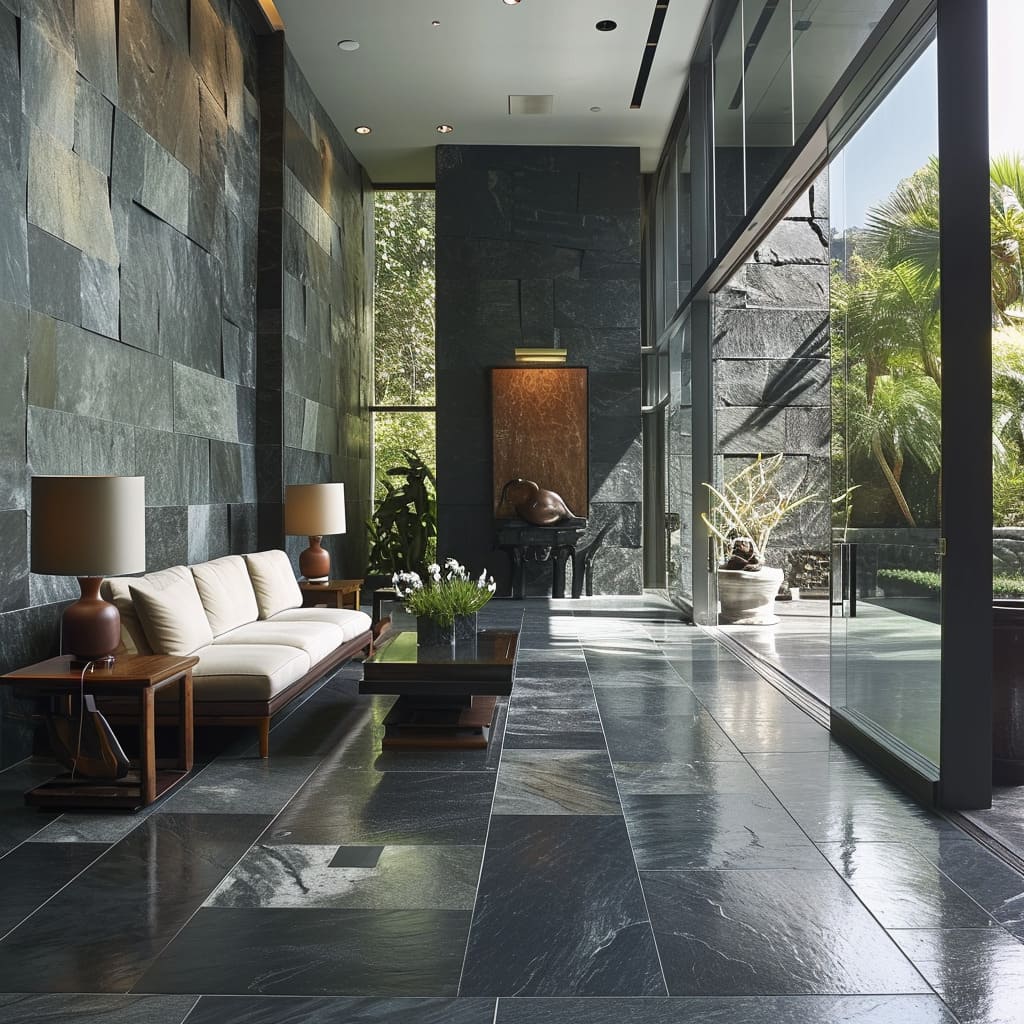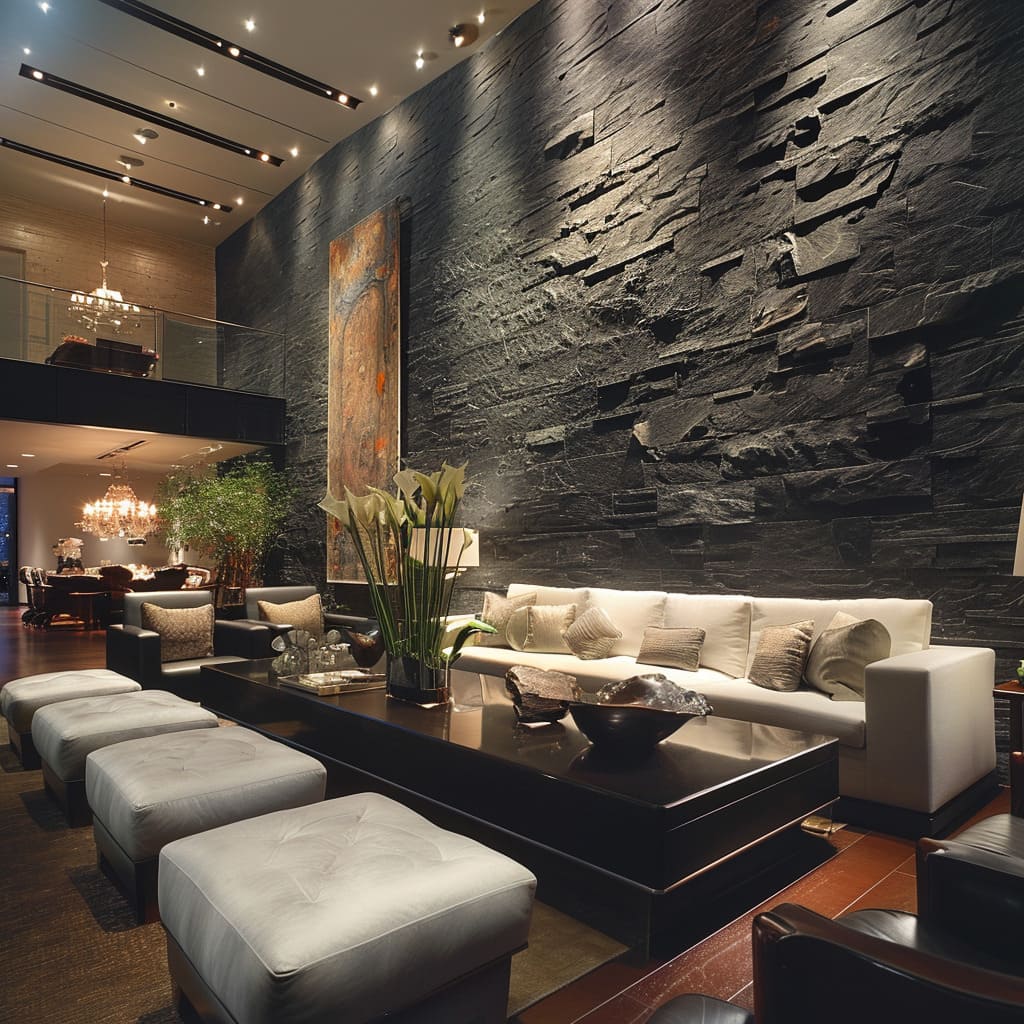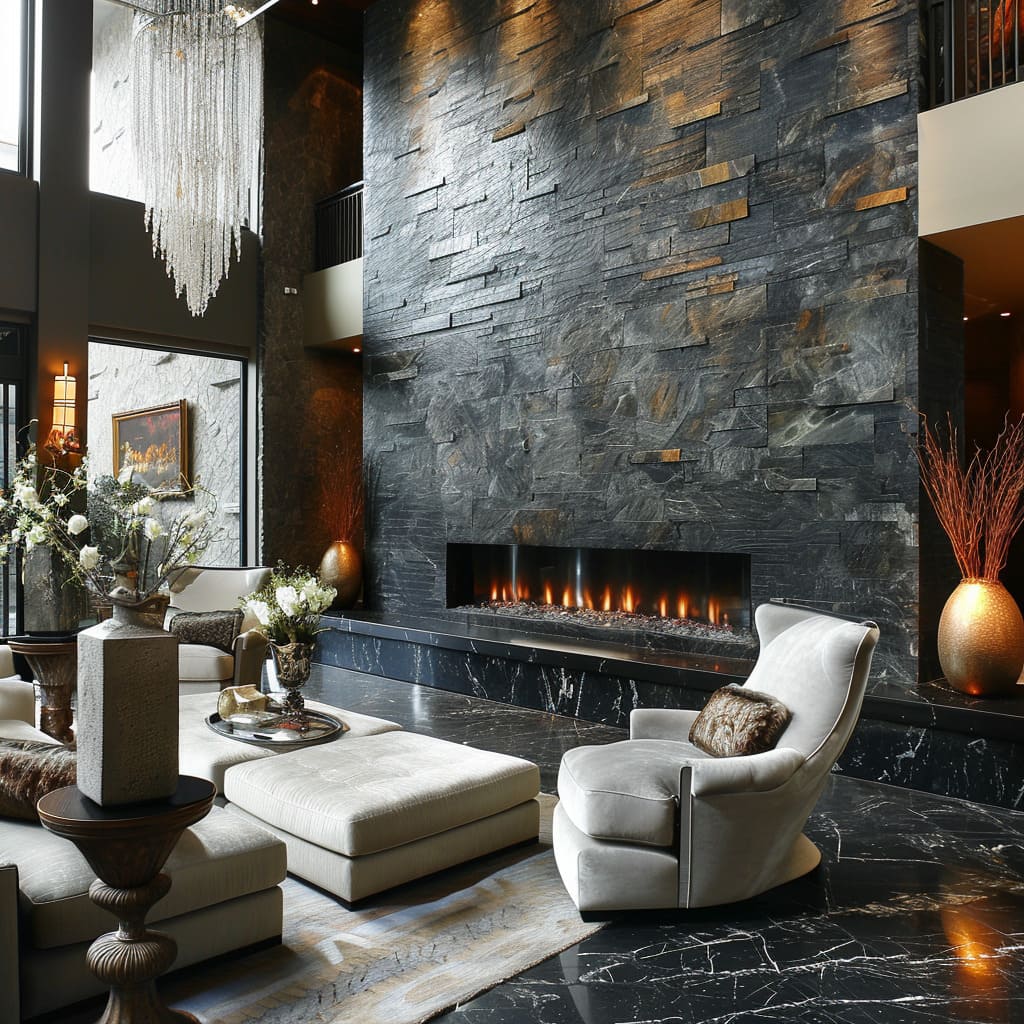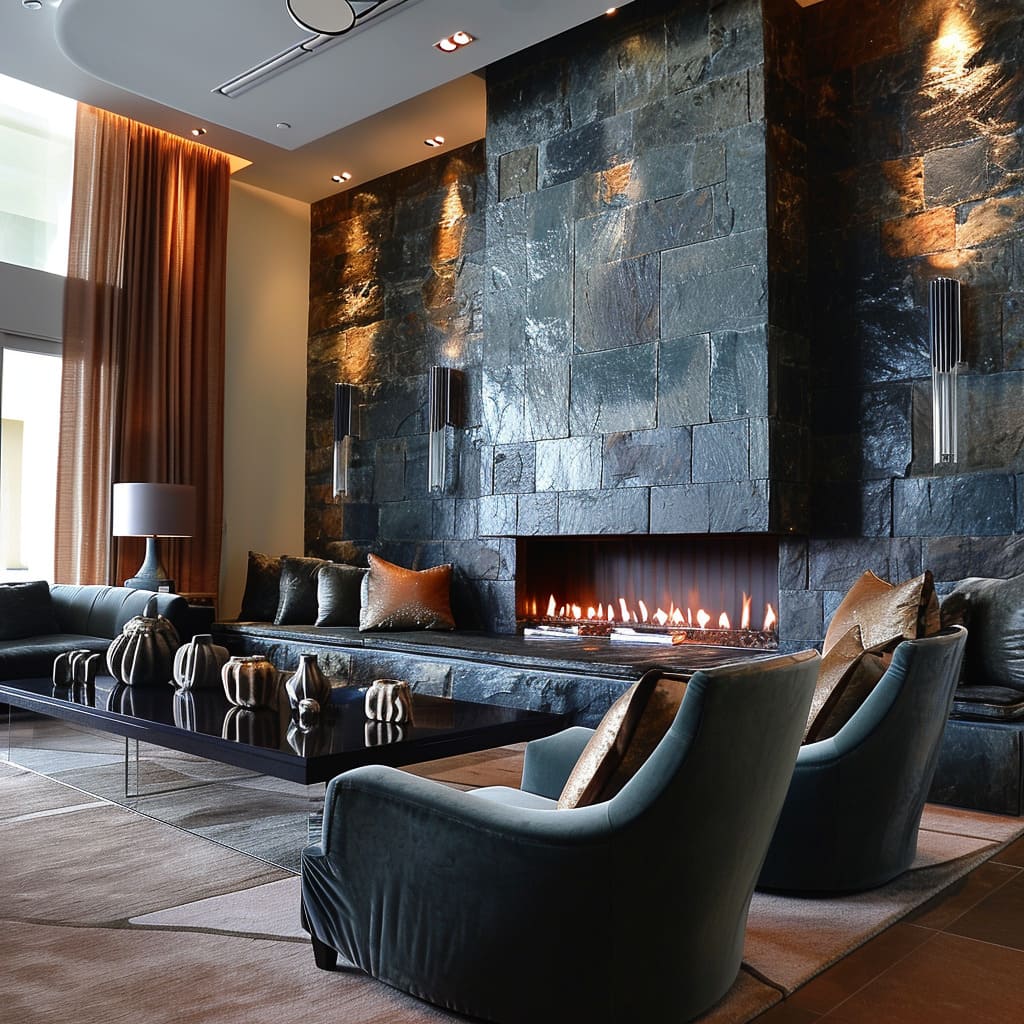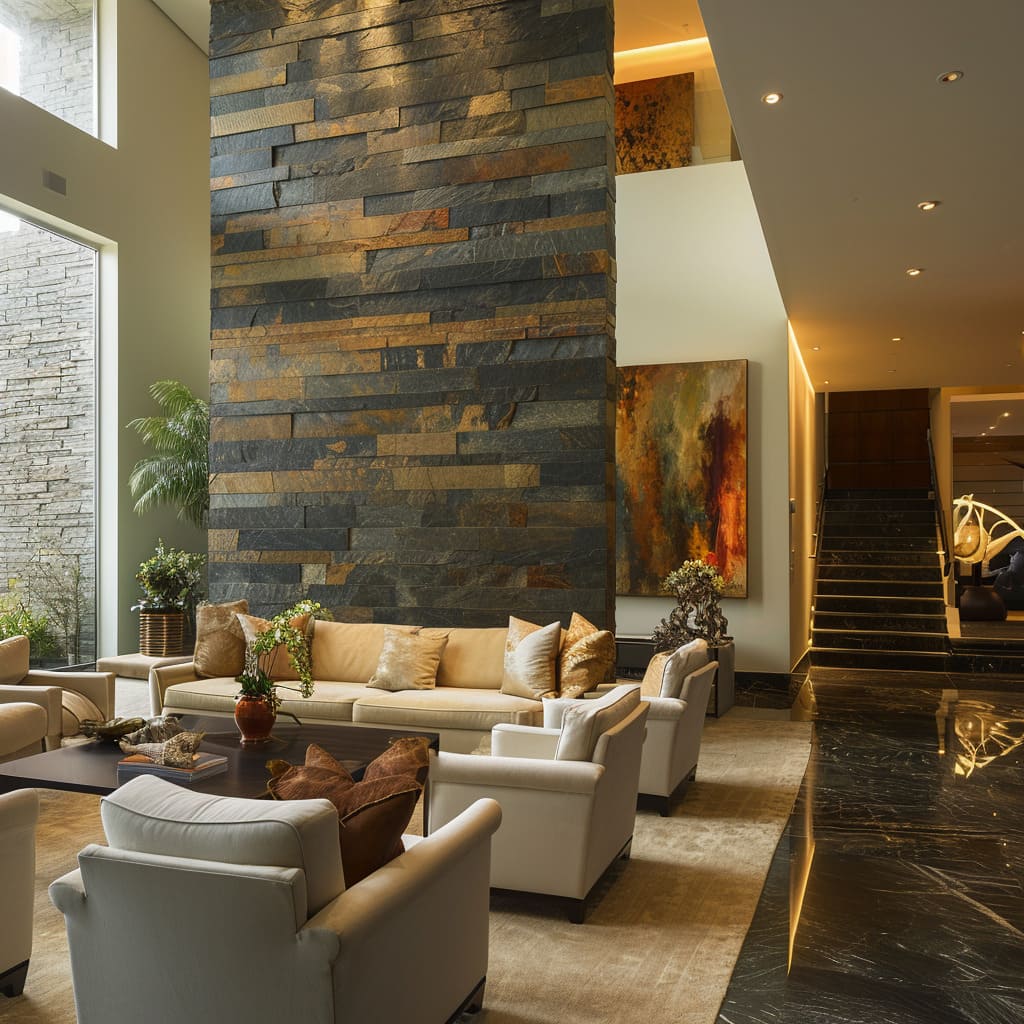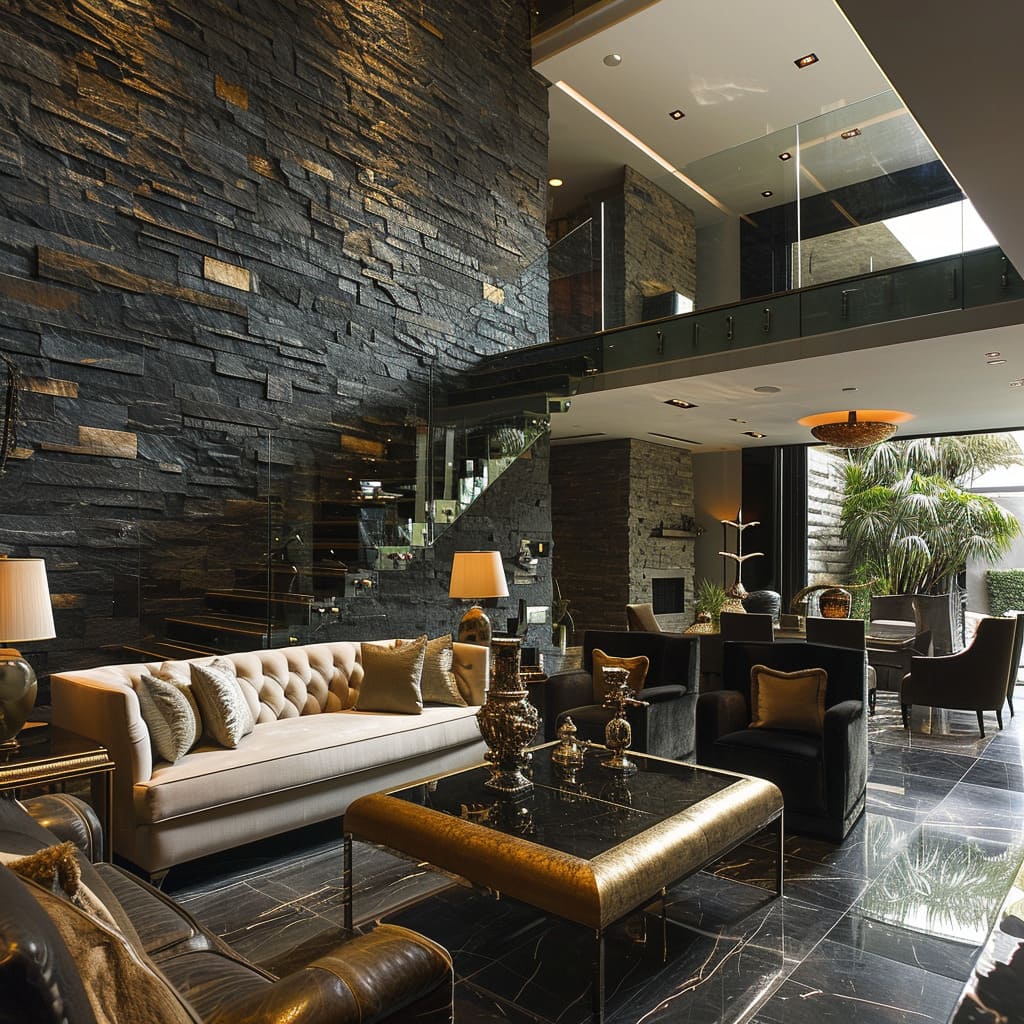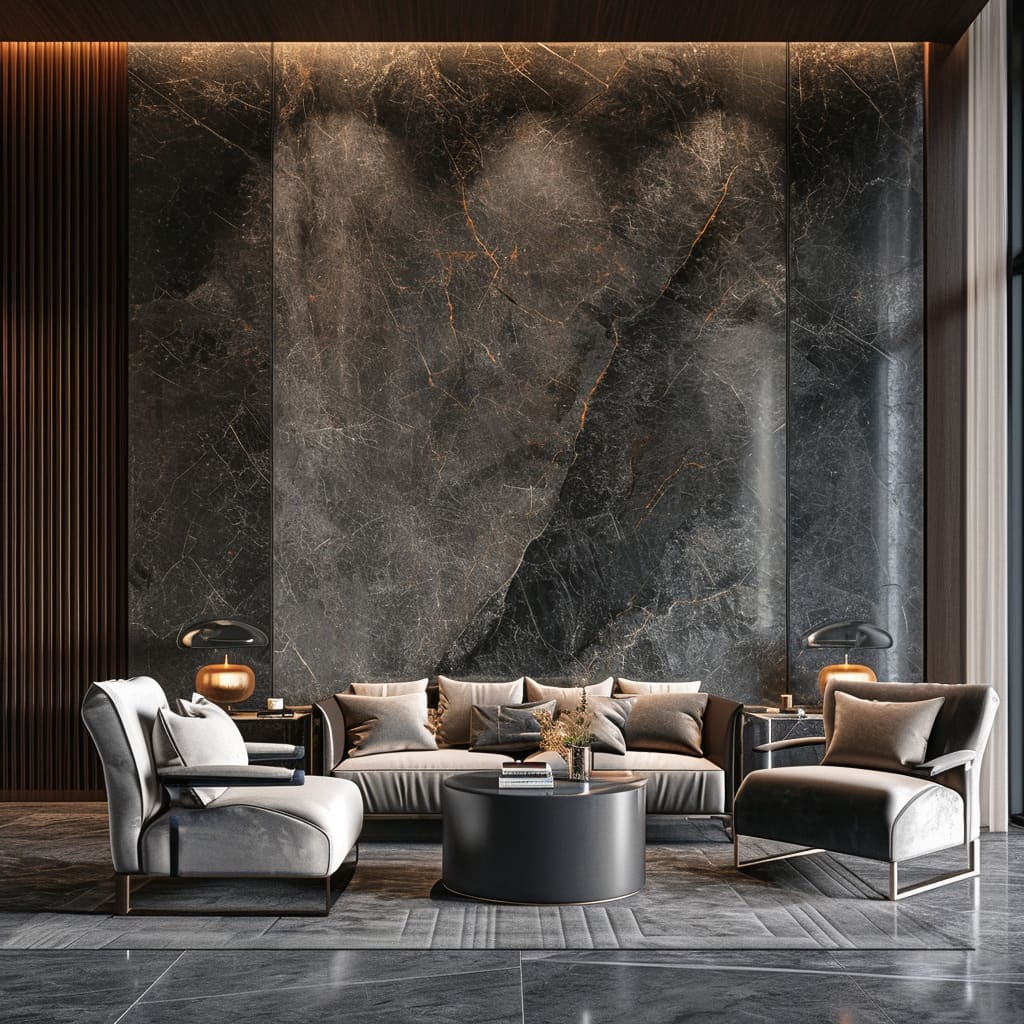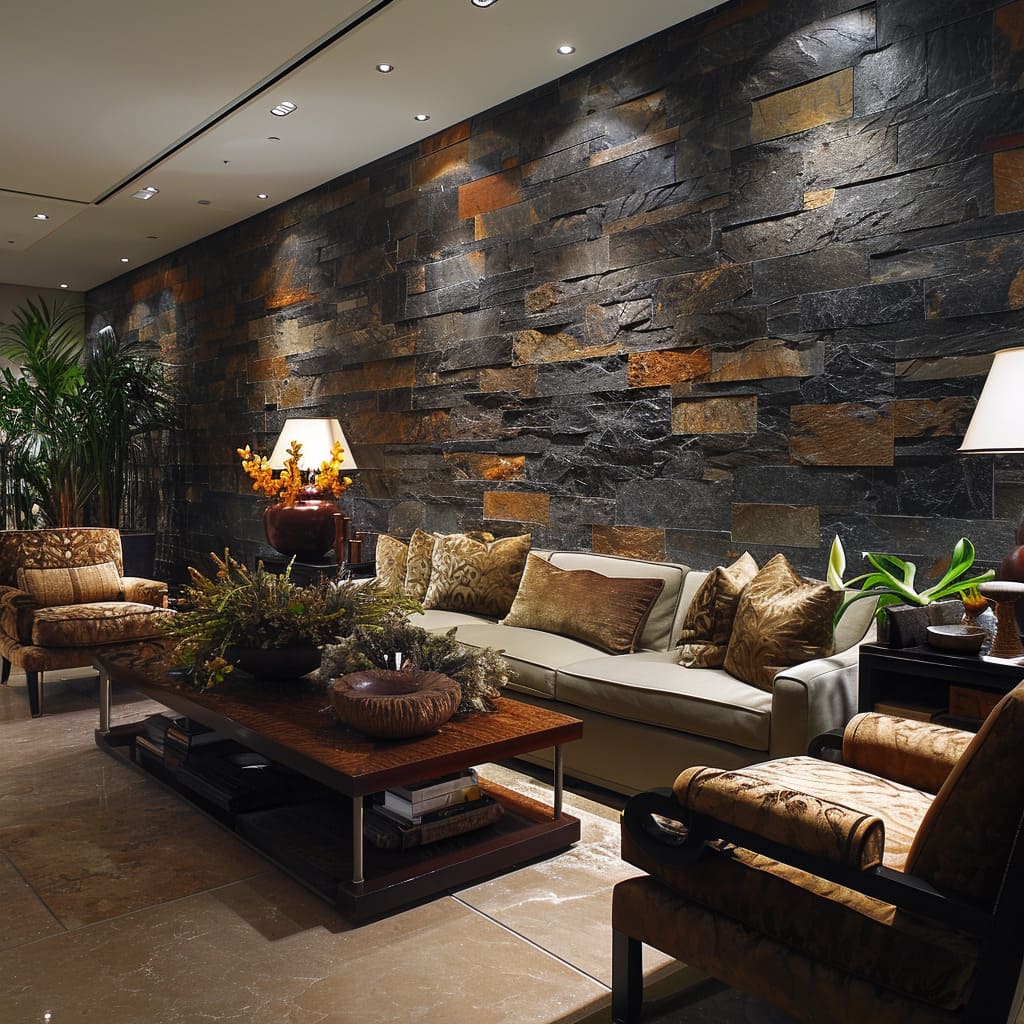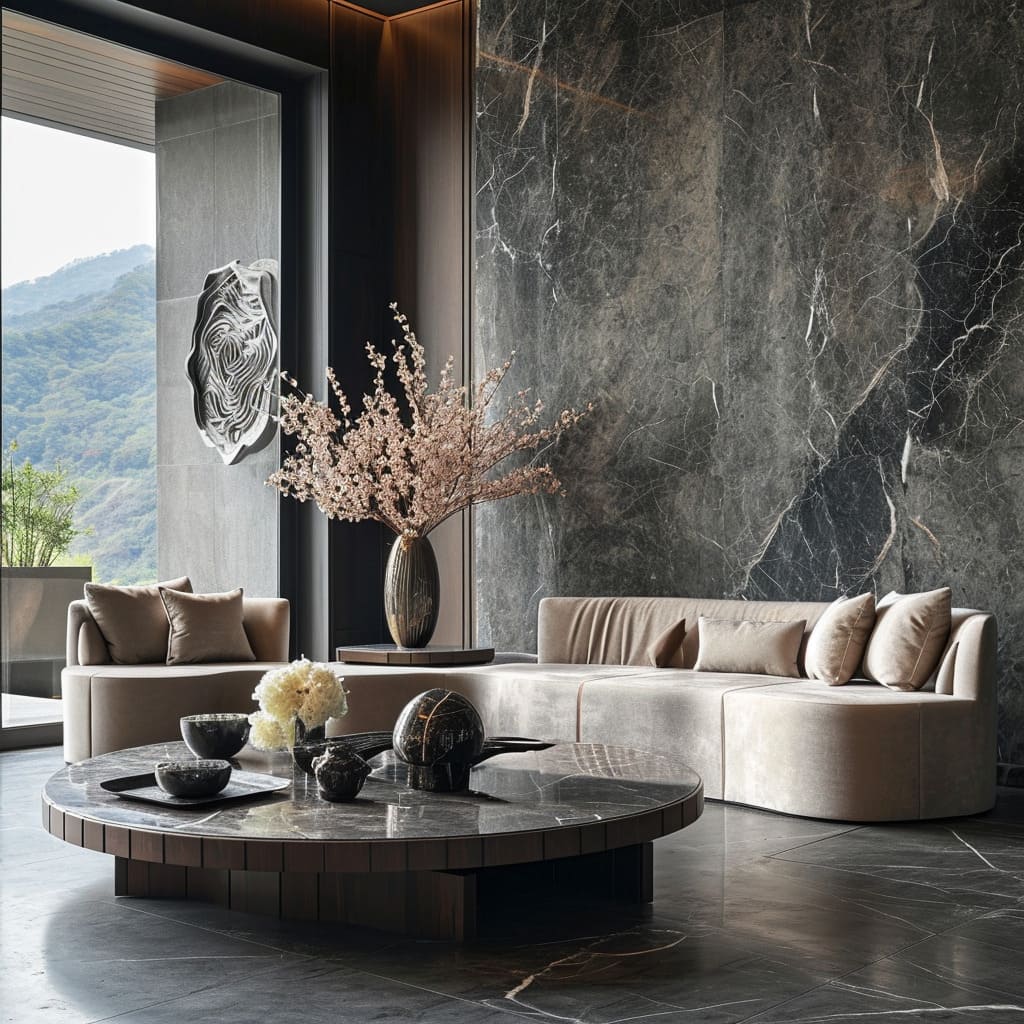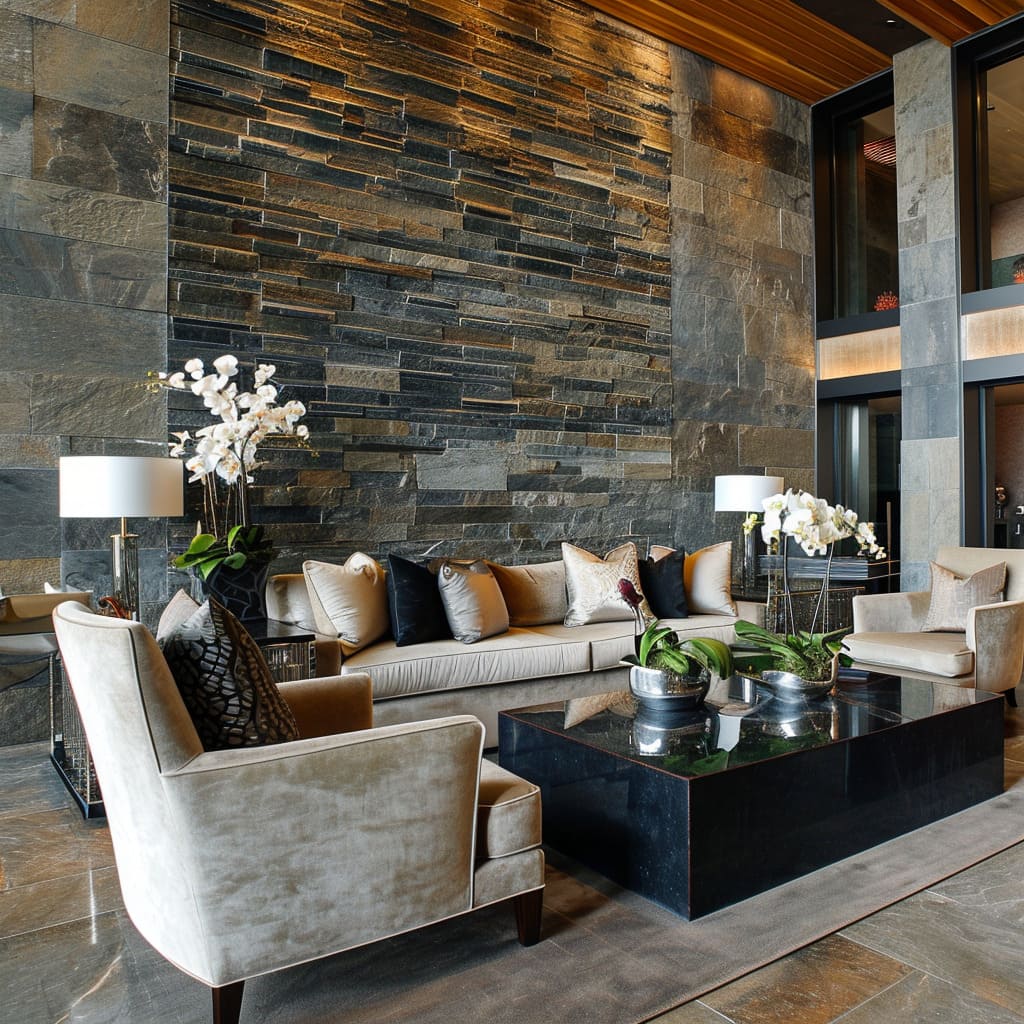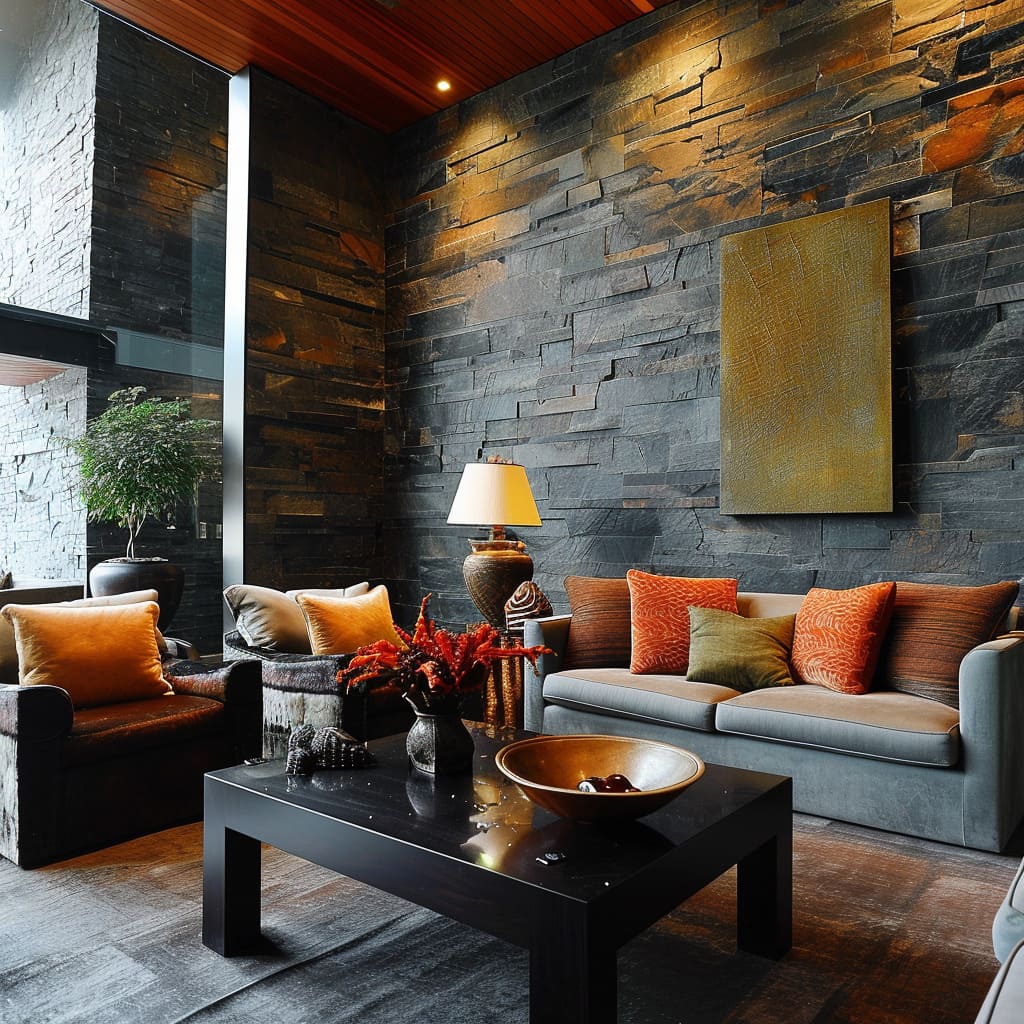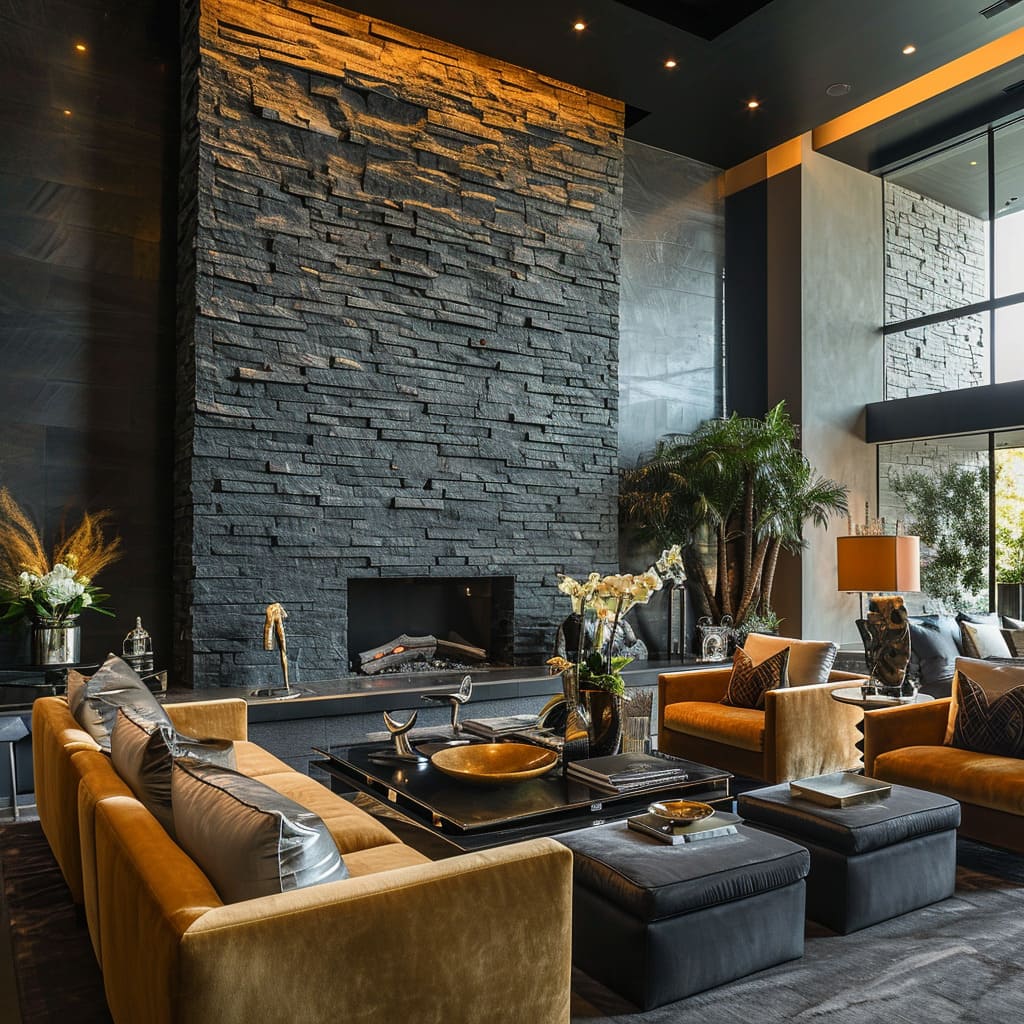In the realm of interior design, the choice of materials plays a pivotal role in defining the character and ambiance of a space. Among these, stone stands out as a material that combines natural beauty with remarkable versatility.
This article delves into the multifaceted world of stone in interior decoration, exploring how it harmonizes with different design elements to create spaces that are not only visually stunning but also imbued with a sense of timelessness and durability.
From the classic elegance of marble to the rustic charm of slate, stone offers a spectrum of textures, colors, and finishes that can complement any design style. Whether it’s the warmth it brings when paired with wood, its interplay with light, or its ability to align with diverse color palettes, stone’s versatility is unmatched.
We will explore how stone seamlessly integrates into various design narratives, from modern minimalism to traditional opulence, and how it balances aesthetic appeal with practical functionality.
Moreover, this article will highlight stone’s sustainable attributes, underscoring its growing relevance in eco-friendly design practices. Join us as we journey through the versatile and enduring world of stone in interior design, where each piece tells a story of the earth, contributing to spaces that are as sustainable as they are beautiful.
Enhancing Spaces with Natural Stone Textures
Natural stone stands out as a key element in interior decoration, providing both visual appeal and a unique tactile experience. This material is used in various ways, such as feature walls and flooring, to create focal points in different spaces.
The stone’s texture, ranging from polished smooth surfaces to rugged, rough finishes, plays a significant role in the room’s overall feel.
Polished stone surfaces not only add a sense of spaciousness by reflecting light but also contribute to a more echoic atmosphere due to their smoothness. On the other hand, rougher textures absorb sound, fostering a softer, more muted environment.
This versatility in texture allows for a wide range of aesthetic and functional applications in interior design.
In addition to its functional aspects, natural stone brings a touch of the natural world into indoor spaces. This connection to nature often has a calming effect on those who occupy these spaces.
Each piece of stone is unique, with inherent patterns and variations that ensure no two installations are exactly alike, adding an element of exclusivity to the design.
Furthermore, the finish of the stone greatly influences the room’s ambiance. High gloss finishes create a dynamic, reflective environment, enhancing the sense of movement within the space.
In contrast, honed or matte finishes offer a subtler, more sophisticated look, perfect for creating a serene and elegant atmosphere. Through these diverse applications, natural stone proves to be a versatile and impactful choice in interior decoration.
The Diversity of Stone in Interior Design
In interior decoration, various types of stone such as marble, slate, granite, and travertine play distinct roles based on their unique characteristics.
Marble, known for its striking veining and sheen, is a popular choice for living spaces. It’s often used in areas where aesthetic appeal is paramount, like in backdrop walls, due to its luxurious appearance.
Marble is not just visually impactful but also practical. It’s frequently used as a countertop material in kitchens and bathrooms.
Its cool surface is particularly beneficial in baking areas, where it helps in dough preparation.
Slate, recognizable by its layered structure, brings a rustic charm to spaces. It’s a practical option for flooring and walkways, thanks to its durability and natural slip resistance.
This makes slate particularly suitable for bathrooms and pool surrounds, where safety and a less formal look are desired.
Granite and travertine are other popular choices, each with their distinct visual and functional qualities. Granite, with its granular texture, is renowned for its hardness, making it an ideal material for high-use areas like kitchen countertops.
It resists scratches and heat, and when treated for additional slip resistance, it becomes even more versatile.
Travertine, on the other hand, is known for its pitted surface and earthy tones. It’s often chosen for its ability to impart an old-world feel, making it a favorite for entryways and living areas.
Its unique texture and color range contribute to a space’s character and ambiance.
The choice of stone in a space is closely tied to the desired mood. Lighter stones can create a bright, airy atmosphere, while darker stones are often associated with a sense of solidity and luxury.
This diversity in stone types allows designers to tailor spaces to specific aesthetic and functional needs, enhancing the overall appeal and utility of interior spaces.
The Practical Perks of Choosing Natural Stone in Interior Design
Natural stone is a favored material in interior decoration not only for its aesthetic beauty but also for its practical benefits. Renowned for its durability, natural stone is particularly suitable for areas with heavy foot traffic, like common spaces, where it stands up well over time.
Its inherent coolness is another advantage, helping to regulate temperature in warmer climates and contributing to a comfortable indoor environment.
One of the most appealing aspects of natural stone is its ability to age gracefully. Over time, it acquires a unique patina, adding character and depth to any space.
This aging process enhances the stone’s natural beauty rather than diminishing it. Furthermore, natural stone is easy to maintain.
It resists the rigors of regular cleaning and retains its aesthetic qualities, making it a practical choice for both residential and commercial settings.
From a health and environmental standpoint, natural stone is a standout choice. It’s a non-toxic and eco-friendly option, contributing positively to indoor air quality and sustainable design practices.
These characteristics are increasingly important in modern interior design, where health and environmental impact are key considerations.
Despite a higher initial investment compared to other materials, the enduring nature of stone makes it cost-effective in the long term. Its resistance to wear and tear means fewer replacements and maintenance costs, translating into long-term savings.
Additionally, incorporating natural stone into a property can enhance its overall value. The material’s quality and universal appeal are recognized attributes that can increase a property’s market value, making it a wise investment for homeowners and property developers alike.
The Synergy of Lighting and Stone in Décor
The relationship between lighting and stone in interior design is a critical one, with strategic lighting serving to amplify the natural beauty of stone materials. Carefully chosen lighting can significantly enhance the intrinsic patterns of stone, bringing out the richness of its colors and the depth of its textures.
For instance, warm, recessed lighting can illuminate the golden tones in dark marble, adding a touch of luxury and warmth to the space.
The use of spotlights plays a crucial role in highlighting the relief and texture of stone, emphasizing its three-dimensional quality. This is particularly effective in creating focal points and drawing attention to specific features of the stone.
Additionally, the interaction of natural daylight with stone surfaces can alter the ambiance of a space throughout the day, as the sunlight accentuates different facets of the stone.
The versatility of stone in interior design is further enhanced with dimmable lighting solutions. Such lighting allows for an adjustable environment, enabling the mood to shift from bright and energizing to soft and romantic, depending on the occasion or time of day.
Moreover, the reflective qualities of polished stone can significantly increase the impact of lighting. Strategic placement of lights is essential to maximize this effect, making the most of the stone’s reflective properties.
In contrast, textured stone surfaces can be used in conjunction with lighting to create dramatic silhouettes and shadows, further showcasing the dramatic and natural beauty of the stone.
Stone and Color Palette in Design
In interior decoration, the coordination between the stone and the room’s color palette is a pivotal aspect of design. The images presented in this article showcase how neutral and earthy tones of stone contribute to a serene and calming environment.
This color harmony is further enhanced by furniture and decor choices, creating a unified and cohesive aesthetic.
For example, the contrast of burnt orange chairs against a backdrop of dark marble wall exemplifies how warm colors can enliven a space, making it more inviting and lively. This thoughtful use of color extends to accentuating architectural features as well.
Light-colored stones can give the illusion of a more spacious and open area, while darker stones add a sense of depth and grounding to a room.
The versatility of stone colors allows for an interesting interplay with different textures in fabrics and finishes. Designers often experiment with a mix of materials, balancing aesthetics to achieve a cohesive look.
The article demonstrates how color coordination is meticulously considered. Cool stone hues are often offset with warm wood tones or metallic accents, creating a balanced and dynamic design.
Moreover, stone serves as an excellent neutral backdrop, providing the flexibility to introduce bold color statements through art pieces or furnishings. This adaptability means that the accent colors of a room can be easily altered without necessitating major renovations.
Overall, the careful matching and contrasting of colors in coordination with stone textures play a crucial role in achieving a harmonious and dynamic interior design.
Stone in Combination with Diverse Materials
In the field of interior decoration, the use of stone in combination with other materials plays a significant role in defining the character of a space. Stone is frequently paired with natural elements like wood, which introduces warmth and contrasts with the stone’s inherent coolness.
This combination balances the ambiance of the room, creating a harmonious environment.
Metal accents, another popular pairing with stone, are often used in furniture frames or lighting fixtures. These elements add a contemporary flair, transforming the stone’s traditional rustic appeal into a more modern aesthetic.
This blend of old and new enhances the versatility of stone in various design styles.
The juxtaposition of stone with glass is particularly striking, creating a play between solidity and transparency. This contrast lends a modern edge to the overall design, making spaces feel more dynamic and visually engaging.
Additionally, the integration of greenery and plants breathes life into stone-dominated spaces, establishing a connection between man-made and natural elements, and enriching the sensory experience of the environment.
Textiles also play a crucial role in complementing stone. Materials like wool or silk used in rugs and upholstery add a layer of softness, contrasting with the hard surface of stone.
This not only enhances the tactile experience but also introduces color and pattern, which can either complement or contrast with the stone, depending on the desired aesthetic.
In more luxurious designs, stone is often combined with high-gloss lacquered surfaces or intricate wood inlays. Such combinations elevate the space’s opulence, showcasing the versatility of stone in enhancing the luxury and elegance of interior spaces.
This thoughtful blending of materials with stone underscores the importance of material interplay in creating rich, multi-dimensional interior environments.
Stone in Diverse Design Narratives
Stone’s versatility in interior decoration is evident across various design styles, adapting effortlessly to create different aesthetic appeals. In traditional settings, stone brings a classic and timeless feel, complementing plush furniture and rich textures.
It equally finds its place in modern and minimalist designs, where its natural beauty becomes the focal point, unchallenged by other bold design elements.
In modern decor, the sleek, clean lines of stone slabs harmonize with the minimalist ethos, underscoring a sense of simplicity and elegance. Conversely, in more maximalist settings, stone serves as a dynamic canvas, supporting intricate patterns and bold statement pieces.
This adaptability allows stone to be tailored to any design narrative, whether it’s sleek and contemporary or ornate and classical.
Stone’s role is particularly prominent in transitional design styles, which meld traditional and contemporary elements. In these spaces, stone acts as a bridge, connecting the old with the new, offering a material that honors traditional design while simultaneously embracing modern aesthetics.
Furthermore, stone appeals to those who prioritize sustainability in design. Its permanence and minimal processing needs make it an environmentally friendly choice.
Being a natural and abundant material, stone can often be sourced locally, reducing environmental impact and supporting sustainable design practices. This aspect of stone makes it not just a versatile design element, but also a responsible choice in today’s environmentally-conscious world.
The Timeless Elegance of Stone in Interior Design
In conclusion, the role of stone in interior design is both multifaceted and profound. Throughout this article, we’ve explored how stone’s inherent beauty and versatility make it a cornerstone in various design styles.
From the warmth and rustic appeal it brings when combined with wood and metals, to its ability to enhance modern and minimalist aesthetics with its clean lines and natural patterns, stone proves to be an invaluable element in creating diverse and dynamic spaces.
The synergy of stone with lighting and its ability to complement and contrast with a room’s color palette further underscores its indispensable role in interior decoration. Its adaptability in different design narratives — from traditional to contemporary, and maximalist to minimalist — shows that stone is not just a material choice, but a design statement.
Moreover, stone’s sustainability and eco-friendliness align with contemporary design philosophies that prioritize longevity and environmental consciousness. It is this blend of aesthetic versatility, practical durability, and ecological responsibility that makes stone an enduring favorite in interior design.
As we have seen, the timeless elegance of stone transcends trends and styles, making it a wise and beautiful choice for any interior space. Whether in residential or commercial settings, the use of stone can transform an ordinary space into one of sophistication, warmth, and enduring beauty.
In embracing stone, designers and homeowners alike are not just choosing a material, they are investing in a piece of the earth’s legacy, bringing a slice of the natural world into our daily lives.



